
2023 Trek Fuel EX
Wheel Size: XS: 27.5’’; Small: 27.5’’ and 29’’ options; M through XXL: 29’’; all 29’’ frames also mullet compatible with a 160mm-travel fork
Travel: 140 mm rear / 150 mm front
Material: Aluminum and carbon fiber versions available
Sizes Offered: XS–XXL
- Aluminum frame w/ Fox Float X Performance: $2,600
- Carbon frame w/ Fox Float X Factory: $3,900
- Complete bikes $3,700 to $10,750
Blister’s Measured Weight: 33.1 lb / 15.0 kg (Fuel EX 9.8 XT, size Large)
Reviewer: 6′, 170 lb / 183 cm, 77.1 kg
Test Location: Western Washington
Test Duration: 4 months
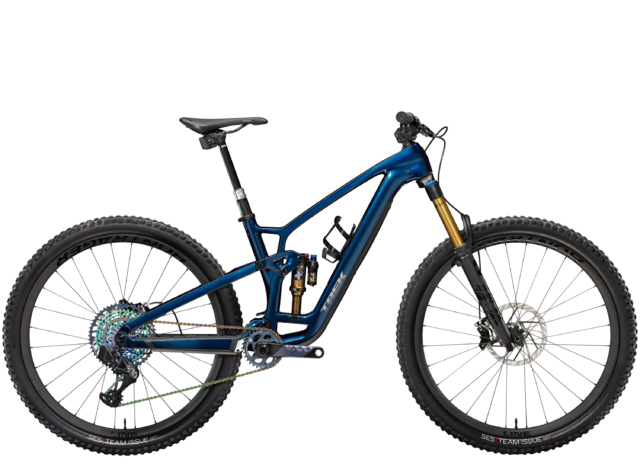
Trek’s Fuel EX has long been a popular all-round Trail bike, but the new version looks like a major departure from the bike it replaced, with more suspension travel, dramatically longer / slacker geometry, a ton of new adjustability, and a substantial cosmetic overhaul to go with it. There’s a lot to cover here, so let’s get right into it:
The sixth-generation Fuel EX includes loads of updates, starting with the wild amount of adjustability on offer. The prior-generation bike had a flip chip to toggle between two geometry settings, which the new bike retains, but it adds an optional offset headset that changes the headtube angle by +/- 1.0°, as well as a second flip chip that varies the amount of progression from the rear suspension — more on all that in a minute.
The overall aesthetic design of the frame has also been overhauled to match the new Fuel EXe lightweight e-bike, but Trek’s longstanding ABP suspension design carries over (now producing 140 mm of rear wheel travel, up by 10 mm from the outgoing bike), as does the option for aluminum and carbon frame construction. No matter which frame material you opt for, you get a storage compartment in the downtube, internal cable routing across the board, ample rubber guards on the seatstay, chainstay, and downtube, and a threaded bottom bracket shell. ISCG-05 tabs are also featured, and tire clearance is stated at 2.5’’. Trek’s sometimes-irritating Knock Block headset is nowhere to be found on the new Fuel EX. All sizes can fit a water bottle inside the front triangle, though the size of the bottle is limited on the smaller frame sizes.
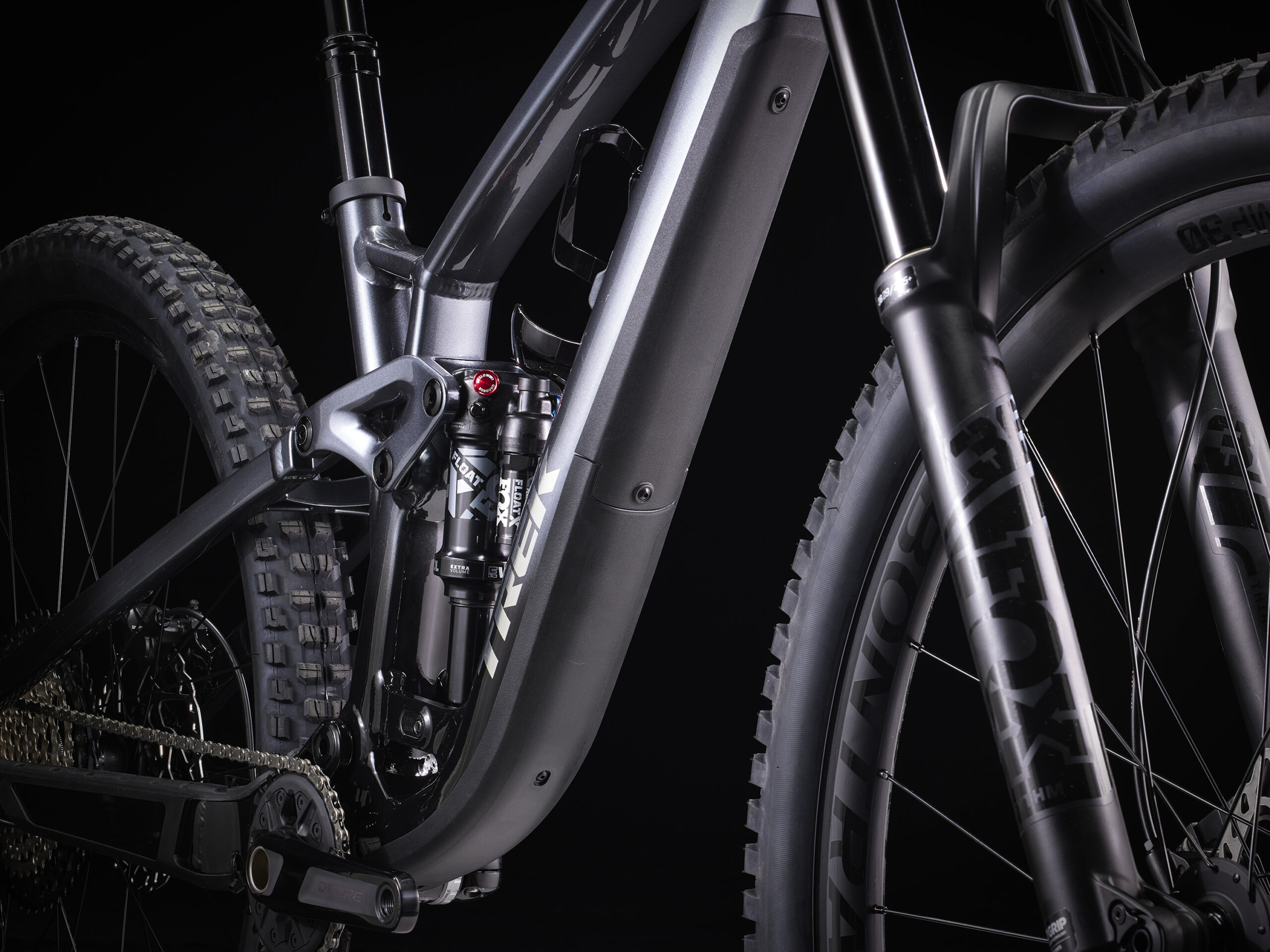
The Fuel EX now has a second flip chip that toggles between two different levels of rear suspension progression, which Trek amusingly simply labels “Less” and “More.” It’s essentially the same system that they introduced on the Session last year. In the “More” progression setting, the leverage curve goes from about 2.9:1 to 2.3:1 in a nearly straight line (~21% total progression); the “Less” setting drops the starting leverage ratio to about 2.75:1 (for ~16% overall progression), and the curve flattens off somewhat near bottom-out.
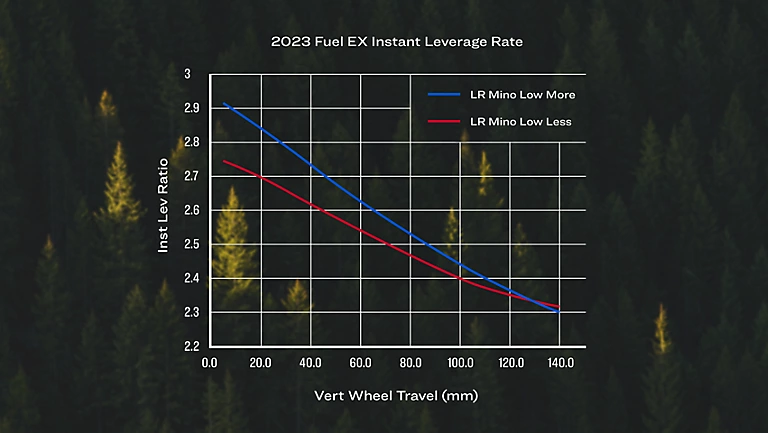
Fit & Geometry
Again, there’s a lot going on here — the new Fuel EX has a huge amount of geometry adjustability between the geometry flip chip (Trek calls it a “Mino Link”), optional offset headset (sold separately), and the option to run the bike with a 27.5’’ rear wheel for a mullet setup (on frame versions designed around a 29’’ front wheel). We’ll get to the full geometry charts in a minute, but to break down the highlights:
- Trek offers the Fuel EX in a whopping seven sizes (XS through XXL, with an “ML” size snuck in the middle). The XS frame is 27.5’’ only, the size Small comes in options for 27.5’’ or 29’’ wheels (each of which gets a dedicated frame — no converting back and forth), and sizes Medium and up are 29ers. All the 29er frames can be run as a mullet with the flip chip in the “High” position (and Trek recommends bumping up to a 160mm-travel fork to raise the bottom bracket a little).
- The headtube angle is 64.5° in what is probably the default position for most people (headset in the neutral position, flip chip in low, which is how Trek will ship the Fuel EX) but you can set it anywhere from 63.5° to 66° depending on how you mix and match the settings with the stock wheel size.
- Going to a mullet configuration on the 29er frames slackens things out to 63.9° in the neutral headset position; you can vary that by one degree in either direction with the offset headset.
- Reach ranges from 400 to 545 mm; all sizes get a 70.8° actual seat tube angle, with the effective measurement starting at over 78° on the smaller sizes and dropping off to 76° by the XXL.
- Chainstay length is 435 mm on the XS through M frames (irrespective of wheel size), 440 mm on the ML and L, and 445 mm on the XL and XXL.
Got all that? The geo chart for the “default” option (stock wheel size, headset in “neutral”, Mino Link in “low”) is below, and you can check out all the other configurations on Trek’s website.

Trek offers the Fuel EX in seven complete builds, and as a frame-only in both aluminum and carbon fiber — a welcome and increasingly-rare option these days. As per usual for Trek, all builds with a non-decimal number feature aluminum frames, while the “9.X” builds are carbon fiber.
[Trek is also continuing to offer the Fuel EX 5 with the prior-generation frame as the most entry-level offering in the range but here we’re covering the builds that are offered on the new sixth-generation frame.]
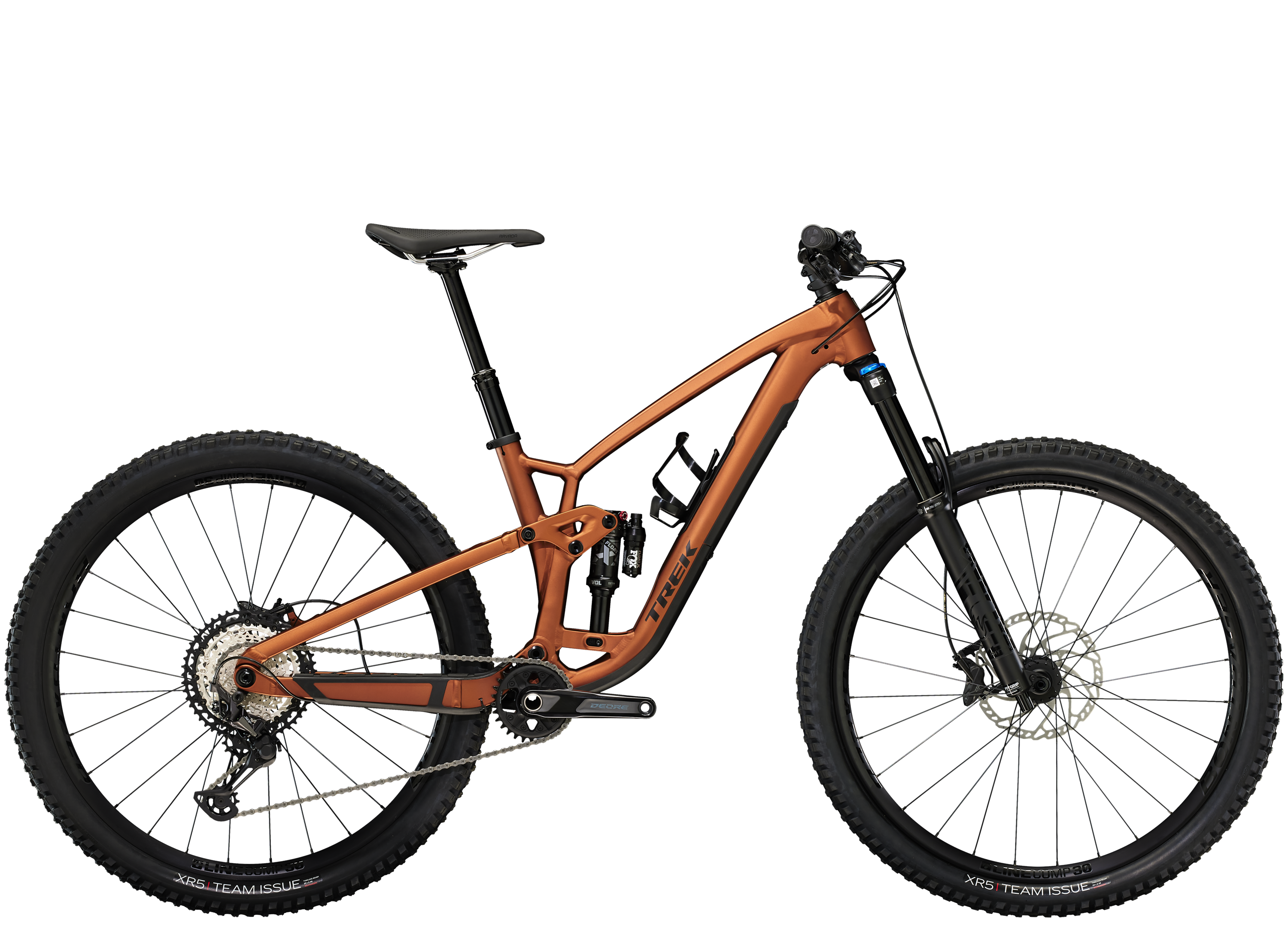
- Fork: RockShox 35 Gold RL
- Shock: Fox Float DPS Performance
- Drivetrain: Shimano SLX shifter, XT derailleur, Deore cassette
- Crank: Shimano Deore
- Brakes: Shimano MT4100 4-piston
- Wheels: Bontrager Line Comp 30
- Dropper Post: TransX
- Fork: Fox 36 Rhythm
- Shock: Fox Float X Performance
- Drivetrain: Shimano XT
- Brakes: Shimano M6100 lever / M6120 4-piston caliper
- Drivetrain: Shimano SLX w/ XT rear derailleur
- Brakes: Shimano M6120 4-piston
- Fork: Fox 36 Performance
- Crank: Shimano XT
- Brakes: Shimano XT 4-piston
- Wheels: Bontrager Line Elite 30 Carbon
- Dropper Post: Bontrager Line Elite
- Drivetrain: SRAM GX AXS
- Crank: SRAM GX
- Brakes: SRAM Code R
- Fork: Fox 36 Factory
- Shock: Fox Float X Factory
- Drivetrain: Shimano XTR
- Crank: e*thirteen TRS Carbon
- Brakes: Shimano XTR 4-piston
- Wheels: Bontrager Line Pro 30 Carbon
- Drivetrain: SRAM XX1 AXS
- Crank: SRAM XX1
- Brakes: SRAM Code RSC
- Dropper Post: RockShox Reverb AXS
Some Questions / Things We’re Curious About
(1) The old Fuel EX was looking a bit dated, geometry-wise, but that’s not the case with the new one, at all. So how does it stack up to a lot of the other good mid-travel Trail bikes we’ve been on recently, including the Santa Cruz Hightower, Guerrilla Gravity Smash, and Commencal Meta TR?
(2) And how does the wild adjustability of the new Fuel EX pan out on trail? Does it feel like a coherent total package across the range of options, or does it start to get a little quirky at the fringes?
FULL REVIEW
Trek has historically been a little on the conservative side when it comes to the geometry and design of their Trail bikes, so when the new sixth-generation Fuel EX launched last year, it came as a surprise — a 140mm-travel Trail bike that could go as slack as a 63.5° headtube angle, with wild new design language, and a ton of adjustability. Now having spent much of the winter and early spring on the new Fuel EX, it’s indeed quite adaptable and well-rounded — and a bike that we think could work really, really well for a lot of folks.
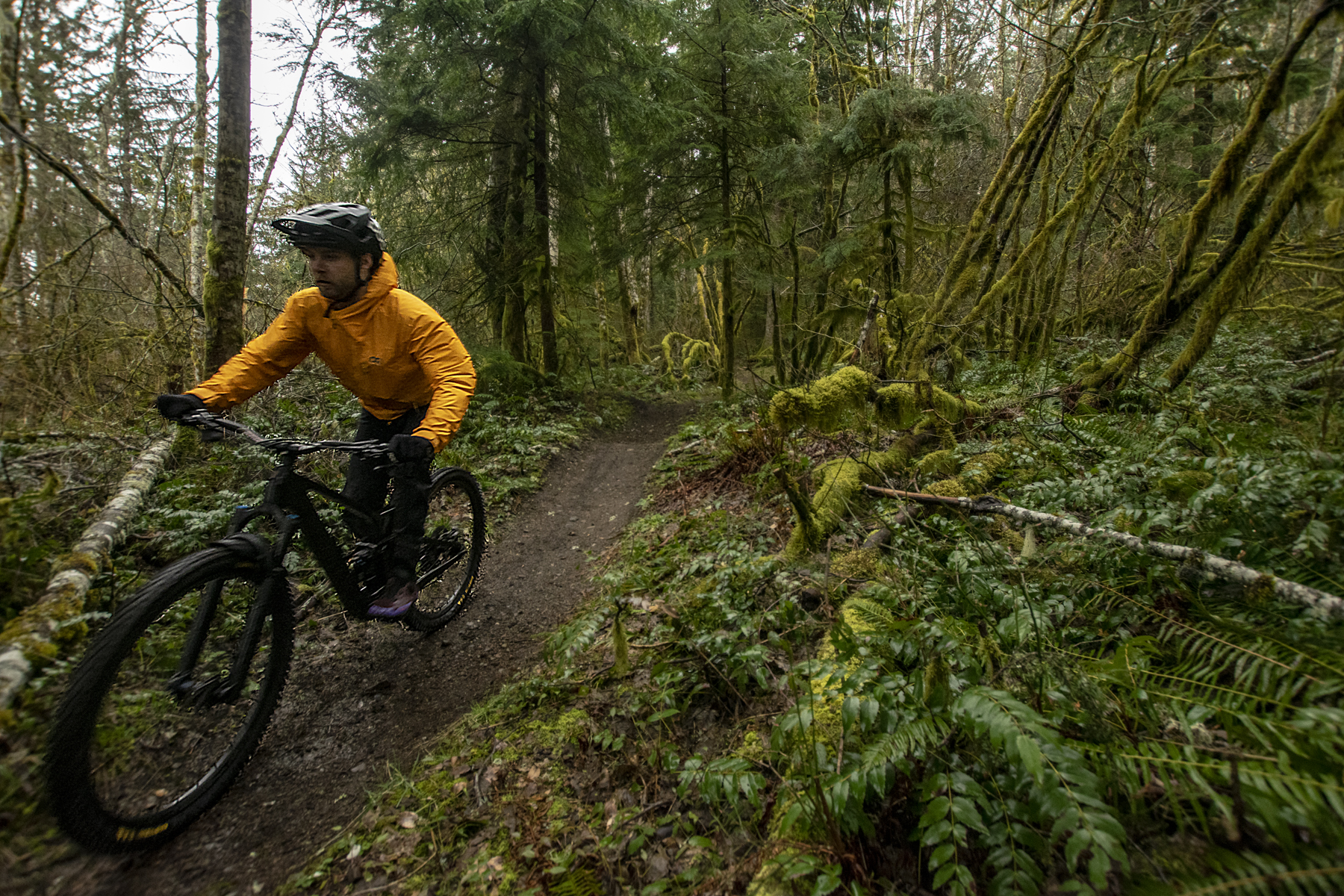
Fit & Sizing
Trek offers the Fuel EX in seven sizes — XS through XXL, plus an “ML” in the middle — but despite the huge size range and relatively tight steps between sizes (particularly around the middle of the range), Trek’s recommended sizing puts me (6’ / 183 cm tall) squarely on a Large frame, with no overlap onto the ML or XL sizes. And at least for my preferences and proportions, that was definitely the right call. I had an easy time getting comfortable on the Large Fuel EX — and with reach, stack, and effective top tube numbers that are all in my typically preferred range, that wasn’t a surprise.
Interestingly, Trek also lists a recommended inseam range on their sizing chart, and despite being at the bottom end of the range (at 33’’) for the Large frame, I had way more than enough room to swap in a 200 mm dropper post in place of the 170 mm one that came stock. Trek does put a 200 mm post on the XL and XXL frames, and I’m sympathetic to the idea that it’s arguably better to err on the side of shorter (so that you don’t have folks who need to swap the post to be able to ride their desired frame size — it’s easier to live with a shorter-than-ideal one than one that’s too tall, for sure). But I wanted a 200 mm post, and I bet a lot of folks on the Large frame will feel similarly.
The Fuel EX’s massive geometry adjustability is much more focused on handling and ride characteristics than fit, and my overall take on fit and sizing didn’t really change much across the range of options (which I’ll cover in a lot more detail below). There are, of course, changes to the reach, stack, and effective top tube as you tweak things via the Fuel EX’s built-in geo adjustments, but they weren’t dramatic enough to change my assessment of the overall fit. The one slight caveat there is the stack height — the Fuel EX’s is a little on the shorter side, and the high flip chip and/or slacker headset settings both reduce it a little more. It wasn’t so short as to cause me real problems getting the fit sorted out, but I did need to swap in a higher-rise bar to help out, particularly in those lower-stack-height configurations to get things high enough — but as I’ll explain below, I wasn’t a fan of the stock bar and stem anyway, rise considerations notwithstanding.
A lot of Trek’s Trail / Enduro bikes in recent years — including the prior-generation Fuel EX — have skewed more toward the compliant, grippy end of the spectrum at the expense of some efficiency and snappiness under power. The new Fuel EX flips that around. It’s quite an efficient, quick-feeling bike under power, but does a notably good job of keeping a solid chunk of the ultra-planted, grippy nature of the earlier iteration — and again, that’s despite the new Fuel EX gaining 10 mm of travel at both ends.
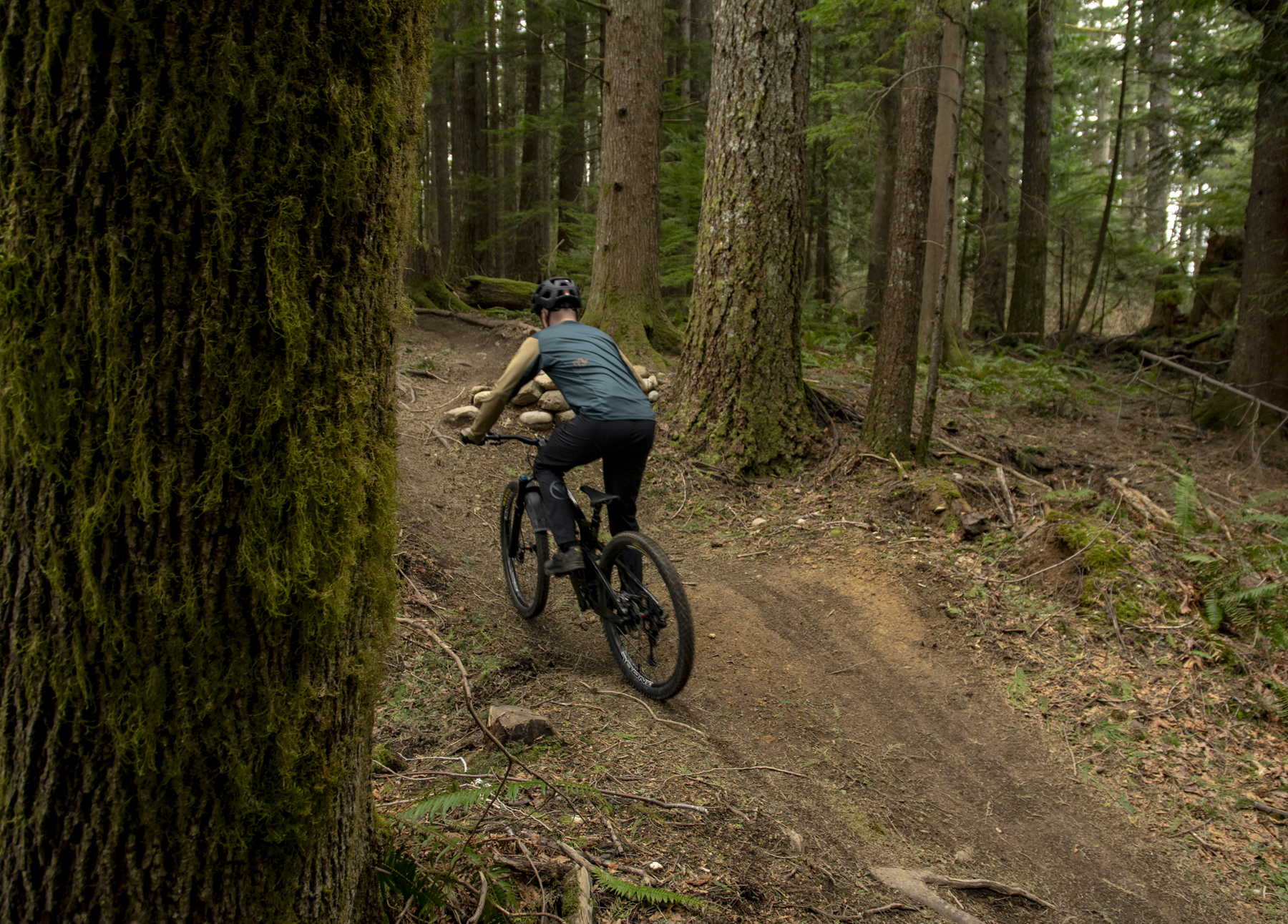
That’s not to say that the Fuel EX is way off the end of the spectrum in terms of efficiency or anything like that, but I’d put it a solid notch above average for a 140mm-Travel trail bike, and it pulls that off while still being entirely respectable when it comes to grip and compliance under power. It’s a really nice recipe for a well-rounded, versatile bike, and while folks who specifically loved the ultra-plush feeling ride of the earlier Fuel EX might feel like the new one has lost a little bit of the magic, I think the new Fuel EX’s suspension performance under power feels more coherent for the bike’s intended use and is going to work better for more people.
In terms of low-speed handling and technical climbing prowess, the Fuel EX’s wildly adjustable geometry makes it a lot harder to give a concise single answer as to how it performs. I’m mostly going to focus on the neutral headset setting since that’s how the bike ships, and I think it’s how most folks are going to run the Fuel EX (and for what it’s worth, it’s also how I preferred to run things), but I’ll touch on the geometry settings and how they change things in more detail below.
Anyway, around the middle of the range of geometry settings, the Fuel EX’s low-speed handling feels quite intuitive and easy but biased a little more toward offering a big sweet spot that makes it easy to keep both wheels planted and gripping, at the expense of a bit of agility at really low speeds, especially as compared to the prior-generation Fuel EX. The new one is still a pretty good technical climber and feels a lot easier to just sit on and grind without having to work to keep the front wheel planted on really steep climbs, but also isn’t quite as easy to snake through really tight spots. Running the steeper, higher geometry settings speeds up the low-speed handling and adds to pedal clearance in really chunky sections but, of course, comes with tradeoffs in higher-speed descending performance. Again, more on the various geometry settings below.
But overall, I think the Fuel EX is an excellent climber for a 140mm-travel Trail bike. The pedaling position is well sorted, striking a nice balance between a steep-ish seat tube without going so far down that road as to feel awkward pedaling around on flat ground. The suspension feels efficient first and foremost but still offers good traction for that level of efficiency and pep under power, and its handling at lower speeds is predictable and intuitive. It’s quite good, especially if you’re inclined to favor a slightly more efficient pedaling platform over the most compliant and grippy suspension performance under power, but the Fuel EX is overall well-rounded and should suit a lot of people nicely.
On the way back down, the Fuel EX is, again, a really well-rounded, versatile bike that feels at home on a fairly wide spectrum of trails. Its massive adjustability (more on that later) doesn’t hurt either, but I don’t think that most folks are going to be toggling between different settings all that often — rather, I think they’re more likely to find a preferred combination and stick with it.

But especially in the middle part of the settings range (as I’ll explain more below, I found the low flip chip / neutral headset setting to be my personal favorite), the Fuel EX strikes a nice middle ground where it’s solidly stable at speed for a 140mm-travel Trail bike but doesn’t feel like it gives up a huge amount of agility to get there. It’s not the absolute quickest handling ~140mm-travel bike in very tight, super low-speed spots, but can still navigate them just fine, and once you’re moving just a little bit, the Fuel EX’s handling feels super intuitive. Its sweet spot in terms of preferred body positioning is notably wide, especially for what is not a wildly long bike overall, and the Fuel EX hits what I think is a really nice blend of being simultaneously moderately stable while also being reasonably quick handling when you need it to be.
And especially in the lower geometry flip chip setting, the Fuel EX corners really, really well. It offers a combination of having a big sweet spot and a lot of room to move around on the bike — in a way that I tend to associate with longer, more stable Enduro bikes — but does so without being as much work to muscle around as those sorts of bikes; this serves the Fuel EX especially well there. It’s not the absolute easiest bike when it comes to slashing the rear end around and oversteering all over the place, but it’ll do that with a little input, and really shines if you’re more inclined to load up the bike through the pedals and carve your way through corners.
The Fuel EX also feels notably plush and cushy in terms of its suspension performance. As I’ll get into more in the section on the build, below, I think a lot of that is down to the rear shock tune as opposed to anything inherent to the frame itself, but the Fuel EX offers a ton of rear-wheel grip over smaller chatter and doesn’t need to be going very fast or hitting stuff hard for its suspension to open up and feel very forgiving and comfortable. The flip side of that is that I did feel like the stock suspension was a bit quick to blow through the middle part of its travel when speeds picked up, especially in choppy, high-speed sections with a lot of sharp mid-sized hits. I’ll grant that this mostly showed up when I was riding the Fuel EX on trails that most folks break out a bigger Enduro bike for, and that I tend to favor firmer compression tunes and more support over the absolute maximum grip and compliance. So I think a lot of folks will be fine with (or specifically psyched about) the lighter compression damping. But it does feel notably light, especially at higher shaft speeds.

While this doesn’t quite fit cleanly into the “Climbing” or “Descending” categories, the Fuel EX really shines in rolling, varied terrain with a bunch of grade reversals and short ups and downs. I’d attribute this to its combination of (1) good pedaling efficiency for those punchy climbs, (2) well-balanced handling with a huge sweet spot in terms of body positioning that helps avoid getting caught out when the bike hangs up in an awkward spot, and (3) notably good traction and suspension compliance at lower speeds, when you’re not able really load up the bike to generate that grip. And while there are a lot of bikes out there that I’d say similar things about — the Santa Cruz Tallboy comes to mind — what sets the Fuel EX apart is that it’s more stable and capable when you point it down a longer, steeper descent than most of the (generally more compact, shorter-travel) bikes that I’d put in a similar camp on the rolling, punchy trails.
Adjustability
The large amount of geometry adjustability on the Fuel EX is an interesting part of the story of the bike. In short, I think Trek has done a good job of offering a host of adjustments that make substantial differences to how the bike rides, without making the range of settings so broad as to make it easy to wind up in a weird combination that rides poorly.
The two flip chips (a.k.a. “Mino Links” in Trek’s parlance) do about what you’d expect. The low setting makes the Fuel EX feel a little more stable at speed and a little slower handling in tight spots, but the bigger difference is that it puts the rider noticeably lower in the bike — eight millimeters of bottom bracket height is quite a bit — and results in feeling more “in” the bike, particularly in higher-speed corners, at the expense of some pedal clearance and some ease of initiating corners by leaning the bike over with more modest input. The “More” progression setting on the Mino Link (which, again, is separate from the geometry-adjusting one) makes the suspension ramp up a little more aggressively and feel more supportive deep in the travel than the “Less” progressive setting, but that difference is comparatively modest.
I also experimented with the optional offset angle-adjusting headset (which is sold separately for folks who want it) and those results were similarly as expected — slackening the headtube made the Fuel EX more stable at the expense of some nimbleness at lower speeds and also required a slightly more forward weight bias to keep the front wheel gripping properly; going steeper makes the low-speed handling quicker but diminishes the Fuel EX’s stability and composure when you start going faster.

I think Trek has done a nice job of working out adjustment ranges that make a real difference in how the bike rides without going so off the deep end as to introduce particularly quirky behavior at the ends of the spectrum, but I had the hardest time with the steeper headset setting, because the chainstays started to feel a bit long relative to the front-center of the bike. In that configuration, the Fuel EX both preferred a more centered, upright body position to not get too far out over the front end and felt like its sweet spot got substantially smaller. Folks who specifically want a very quick-handling ~140mm-travel Trail bike might still find something to like here, but I think the vast majority of people for whom the Fuel EX is a generally good fit are going to be best suited by the stock neutral headset position. And indeed, for the bike’s intended use, the neutral headset, low / more progressive Mino Link arrangement was my preference most of the time.
Though I don’t think all that many people really need to worry about it, I’m still a fan of the fact that Trek offers a clean, easy-to-use offset headset for the bike for the tinkerers out there. The lower cup does require a headset press to install, so it’s not a super quick-and-easy change that many people are going to want to do often, but it’s not hard to do a couple of times to experiment, and the drop-in top cup never gave me any issues with creaking or anything else.
I also tried a mullet configuration on the Fuel EX briefly, but only in the neutral headset position and with the fork still at the stock 150 mm of travel, rather than the 160 mm configuration that Trek recommends. As per usual for bikes that can toggle back and forth, the mixed-wheel layout made the Fuel EX feel a bit quicker handling (particularly in mid-speed corners), a little less stable in a straight line, and made the rear end feel shorter and easier to slash around. None of those differences were huge, and I personally got along better with the full 29’’ setup (as tends to be my preference) but the Fuel EX feels like a very viable mullet candidate for folks who are inclined to go that route.
The Build & Frame
I reviewed the Fuel EX in the mid-range 9.8 XT build, and for the most part, it’s pretty nice. The Shimano XT drivetrain and brakes are great, and this pair of brakes didn’t give me much trouble with wandering bite point, as is often an issue on Shimano’s brakes in general. Carbon wheels are a rarity at this price point ($6,250), and the Fox 36 / Float X suspension combo is solid, too.
But at least for my preferences, I found the compression tune on the rear shock to feel pretty light, particularly in terms of higher-speed damping. The stock shock feels quite plush and cushy when you start hitting things harder, but gives up more support and composure than I would have preferred, particularly in high-speed, choppy sections of trail. I spoke with Trek about my thoughts re: shock tune, and their response was that they tuned their shocks to work as well as possible for as big a swath of the riding public as they could manage, but that there are inevitably tradeoffs in trying to cater to riders across a range of weights and ability levels — and they’re certainly right about all of that. My take is simply that the Fuel EX’s shock tune feels oriented more toward the lighter-damped, more plush end of the range, and that’s absolutely going to be the right call for at least some folks. Heavier / more aggressive riders, or those who just know that they tend to like firmer compression damping might just need to plan on a shock upgrade or re-valve to get the damper support that they want out of the Fuel EX, and I’m personally in that camp.
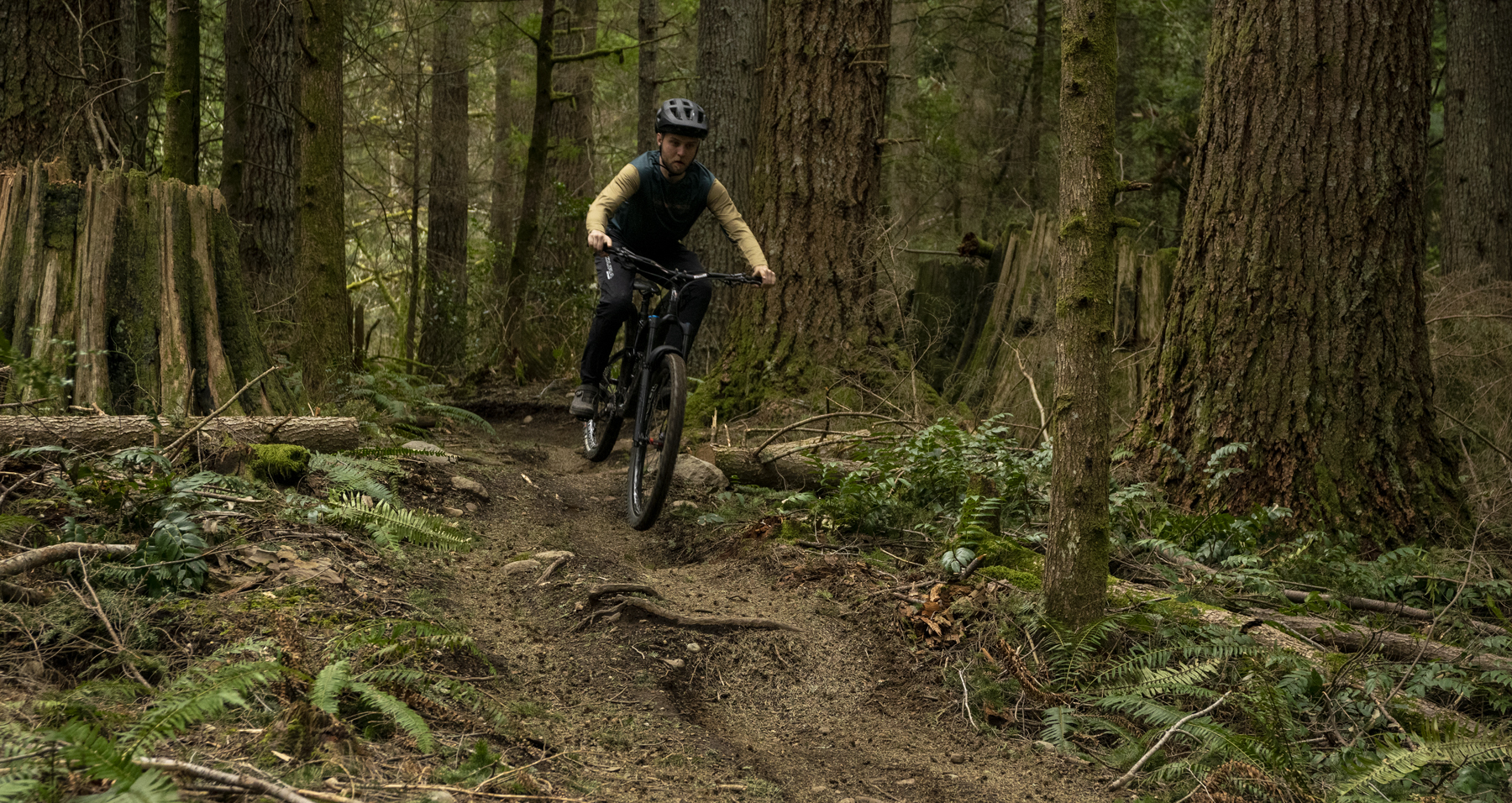
I also was emphatically not a fan of the one-piece Bontrager RSL bar and stem combo. It (arguably) looks cool and is very, very light, but the one-piece design means that there’s no way to adjust the handlebar roll and thus the effective sweep, and I found the angles of the stock setup to be quite uncomfortable. Granted, bar roll / sweep is a thing that I think I’m probably unusually picky about, but it really didn’t work for me. Happily, swapping in a conventional bar and stem is easy (and is something that I wind up doing on a lot of review bikes — like I said, I’m picky), but the one-piece design limits adjustability and I think is going to cause more folks problems there than conventional designs.
The in-frame storage on the Fuel EX generally works fine, but the opening isn’t all that big and it’s a bit hard to stuff larger stuff (e.g., a light jacket) in there. It also gave me what has to be the funniest noise issue I’ve ever encountered on a review bike. The Fuel EX that I tested had been ridden prior to getting sent our way, and when I started spending time on it, there was a muffled but noticeable rattle coming from somewhere around the downtube or bottom bracket area. As it turns out, it was a dried-out and quite-hard strawberry gummy that was rattling around in the bottom bracket shell after escaping whatever some previous rider had it stored in.

I don’t think there’s a big moral to the story here, other than to keep whatever you put in your downtube storage in some sort of pouch, whether it’s the included one or a different option of your choosing. In this case, it was mostly just amusing. The only real (but very minor) build quality note I’ve got is that the upper downtube protector started to sag a bit after a little while and looked a little ragged, but that’s hardly the end of the world.
I don’t mean for that to sound like a lot of complaining — overall, I think the build on the Fuel EX 9.8 XT is quite sensible, and generally a solid value for the money. Commenting on the couple of things where I saw room for improvement just feels a lot more noteworthy than rehashing that, yes, the Shimano XT drivetrain still works really well, etc. And while the Fuel EX 9.8 XT that I rode is a pretty good value for money, I think the 9.7 build might actually be the best bang-for-buck option in the line. On the 9.7, you get the same carbon frame, functionally very similar suspension (the Fox 36 Rhythm uses the older-generation chassis and is a little heavier than the newer 36 Performance on the 9.8 XT, but shares the same basic spring and damper design), and a slightly heavier but still strong-performing Shimano Deore / SLX / XT blend drivetrain. The loss of the carbon wheels is the biggest difference between the two at the end of the day, but for $1,550 in savings at retail price, I can live with that.
Comparisons
Here’s how the Fuel EX compares to several other bikes in its class. If you’re curious about other models, aren’t sure where to start in the first place, or have any other gear questions, you can Become a Blister Member , send us a message via the Member Clubhouse , and we’ll help you out one-on-one.
Trek Fuel EX Gen 5
I don’t have a ton of time on the prior-generation Fuel EX (which is still available from Trek, at least for the time being) but I’ve ridden one enough to know that the new sixth-generation version is pretty different. The new Fuel EX is much more stable and composed at speed, less nimble at low speeds in tight spots, and despite gaining 10 mm of suspension travel at both ends, probably pedals more efficiently. The new one is significantly “more” bike in most respects apart from pedaling efficiency.
Santa Cruz Hightower
This is one of the better comparisons here, but there are still some real differences. In the more middle-of-the-range geometry settings, the Fuel EX is a touch more stable at speed but a little less agile than the Hightower. The Fuel EX also pedals more efficiently but doesn’t offer quite as much traction under power.
But none of those differences are great enough to make them unreasonable bikes to cross-shop against each other or make it super cut-and-dried as to who should be on which bike, and they generally feel targeted at similar types of riding and use cases — just with slightly different characteristics. It’s also worth noting that their sizing breaks are a bit different, and there are likely going to be folks who simply fit one better than the other since, for example, the Large Fuel EX fits a little bigger than the Large Hightower.
Santa Cruz Bronson
Pretty different. The Fuel EX pedals a lot more efficiently than the Bronson but feels significantly less plush and cushy on the way back down. The gap in stability between the two isn’t as large as the differences in suspension performance might suggest, though the Bronson is still more bike on that front, too. And even with the Fuel EX set up as a mullet, the Bronson feels more oriented toward a riding style that favors slashing the rear end around and riding with more weight over the front end to facilitate that.
Transition Smuggler
This one’s interesting — the Smuggler and Fuel EX fit and handle pretty similarly, but feel quite different in terms of their suspension performance. The Smuggler feels much more supportive and lively whereas the Fuel EX is more plush and cushy, at the expense of some composure in really fast, rough sections (which, again, I think has more to do with the shock tune than anything to do with the frame itself). Despite the Fuel EX’s extra suspension travel, the two are pretty close in terms of pedaling performance and efficiency, though the Fuel EX definitely has an edge in terms of traction and grip under power.
Pretty different. These two are actually pretty close in terms of where they land on the super-quick handling to super-stable spectrum but differ substantially in a lot of other ways. The Ripmo has more suspension travel, and definitely feels like it — it’s more composed when plowing into rough sections of trail at speed, in particular. But its suspension also feels firmer and more supportive, as compared to the more plush and cushy Fuel EX. The Rimpo also has more of a notable preference for being ridden with a forward stance with some significant weight over the bars, whereas the Fuel EX feels happier being ridden more centered / neutrally, and has a bigger sweet spot in terms of body positioning — though I think some of that is driven by the fact that the Large Fuel EX fits just a bit bigger than the Large Ripmo we reviewed; the Fuel EX fits me better, personally, but that’s going to vary rider to rider.
Overall, the Ripmo feels like a bit more game-on, hard-charging bike whereas the Fuel EX is happier taking things easier, while still having a solid top end when you decide to open it up. In terms of pedaling efficiency, they’re not too far off from each other but I’d give a slight edge to the Fuel EX.
We Are One Arrival 152
Similar story to the Ripmo, but to a greater extent. The Arrival is a much more game-on, descending-focused bike than the Fuel EX and takes more speed and aggression to come alive, but rewards that sort of approach with an impressively stable, composed ride for a bike that’s pretty quick handling (again, when you’re on it and riding hard). The Arrival is also much more supportive and lively in its suspension performance, but less plush and cushy than the Fuel EX.
Orbea Occam LT
Also pretty different. Despite having 10 mm more rear wheel travel, the Occam LT pedals even better than the Fuel EX and feels especially sharp-handling and quick, whereas the Fuel EX is a little more stable at speed, especially in rougher terrain, but not as agile. The Fuel EX is also much more plush and forgiving in terms of its suspension performance at lower speeds but is far less nimble and pop-y than the Occam LT.
In terms of its handling and ride character, the Occam LT feels like a shorter-travel bike than it actually is, just one that’s got the extra compliance of a 150mm-travel bike when you really need it. The Fuel EX feels like “more” bike despite having a touch less suspension travel.
Orbea Rallon
The Rallon, on the other hand, is way more bike than the Fuel EX — more stable, more composed in rough sections, not as quick handling, and so on. It’s one of the most versatile, most efficient-pedaling Enduro bikes we’ve ever tested, but it still is a modern Enduro bike. The Rallon is impressively close to the Fuel EX in terms of pedaling efficiency, given that it’s got 20 mm of extra travel at each end, but the Fuel EX still wins out there. The two aren’t too far off from each other in terms of small-bump sensitivity, either, but the Fuel EX feels more plush and eager to use a lot of its travel at lower speeds and with mellower riding, whereas the Rallon is a lot more composed and supportive when you start hitting stuff harder.
The Fuel EX and Rallon do remind me of each other somewhat in terms of the way they fit and in the cornering styles they excel at most strongly — both are especially good when loading the bike up through the pedals, getting both wheels to grip hard, and carve through mid-speed, well-supported corners in particular — but the Rallon is much more bike in most respects.
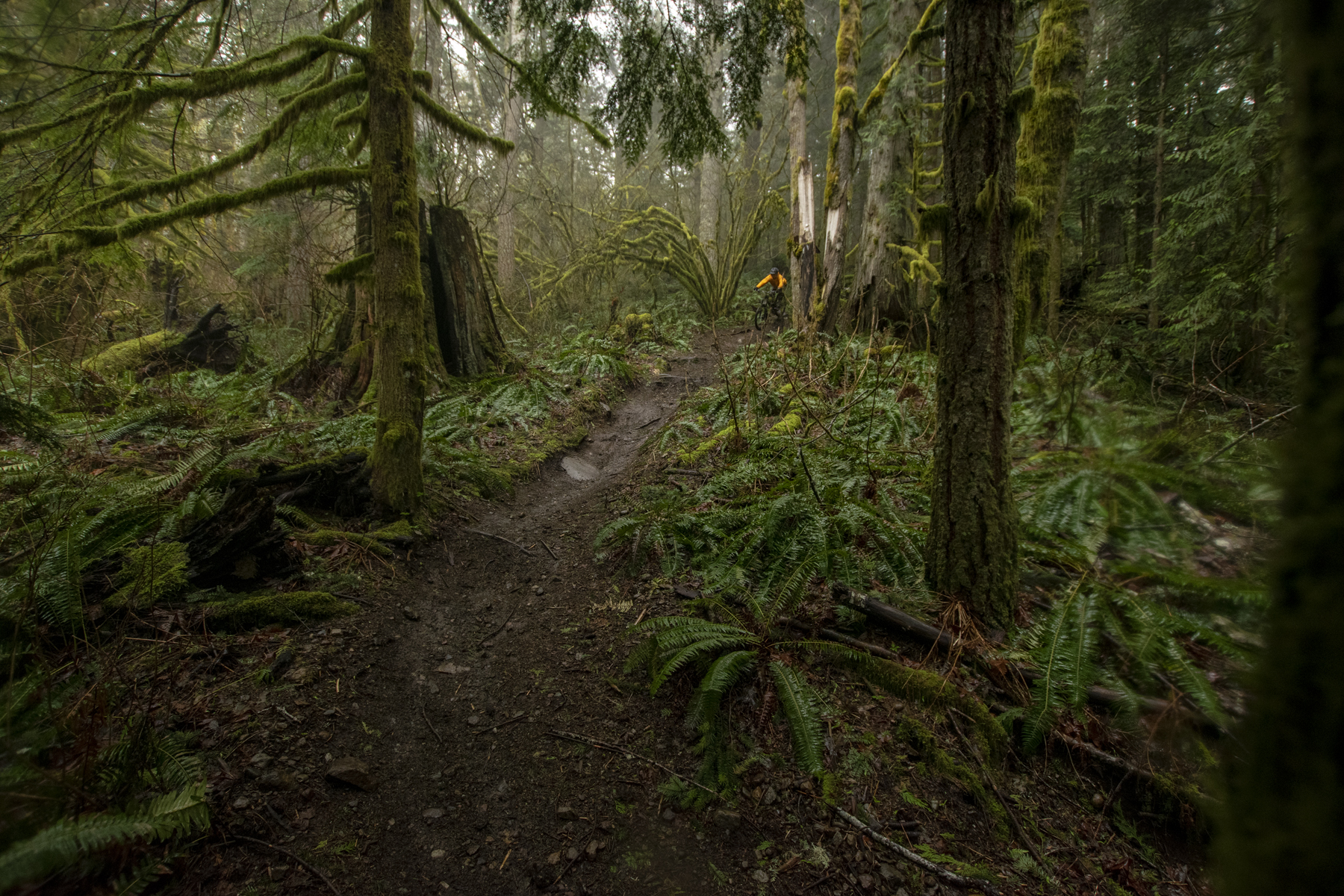
Who’s It For?
The new Fuel EX is an excellent all-rounder Trail bike, especially for people who favor a slightly softer, more supple suspension setup but still want a bike that pedals quite efficiently. It’s very versatile in terms its preferred riding style(s), has a big sweet spot in terms of body positioning and approach, and offers a really nice blend of solid stability and reasonably quick handling, plus a whole lot of adjustability to dial it in to your liking. Heavier and/or more aggressive riders might find the stock suspension tune to be somewhat lightly damped for their preferences — and I’d count myself among those people — but if you’d prefer a more plush, cushy ride, or are willing to put some work into getting the suspension tuned, there’s a lot to like here.
Bottom Line
The new Fuel EX is an especially well-rounded and versatile Trail bike that we can see working for a lot of different riders — especially since it has such a broad range of frame adjustments on offer. Riders who tend to favor firmer, more supportive compression tunes are likely to find the stock setup to be a bit lightly damped, but plenty of other folks are likely to appreciate the plush, smooth ride. And though I didn’t have the opportunity to test this hypothesis, I don’t think there’s anything inherent to the frame design that would stop folks who want a firmer compression tune from getting there via aftermarket tuning or a shock swap.
I want to be careful not to make too big a deal out of the shock tune — it wasn’t quite what I wanted, but I also definitely tend to prefer firmer, more supportive compression damping and I think that the stock setup will work great for a ton of people. And I really, really like the Fuel EX otherwise — it’s an impressively versatile bike that I was able to have a great time riding on a ton of different sorts of trails and one that I would be happy to take most places in the world as my one bike and not feel like I was missing out. And it’s one that I’ve already recommended to a bunch of Blister Members who’ve reached out looking for an all-rounder one-bike quiver, because the Fuel EX is a really good one.
2 comments on “2023 Trek Fuel EX”
Great review, did you manage to get the 200mm dropper in all the way? I am thinking of getting a 200 on my size large.
Yeah, pretty easily. I run a ~780 mm seat height (center of BB to top of the seat, on 170 mm cranks).
Trek has a good seatpost insertion guide in the service manual on their site. It is worth noting that the aluminum frames have a little less insertion than the carbon ones — 265 mm vs. 281 mm for the size Large of both.
Leave a Comment Cancel reply
- Register New User
- First Looks
- Friday Fails
- Community Blogs
- Fantasy League DH
- Places Directory
Field Test: Trek Fuel EX - Evolution Underlined
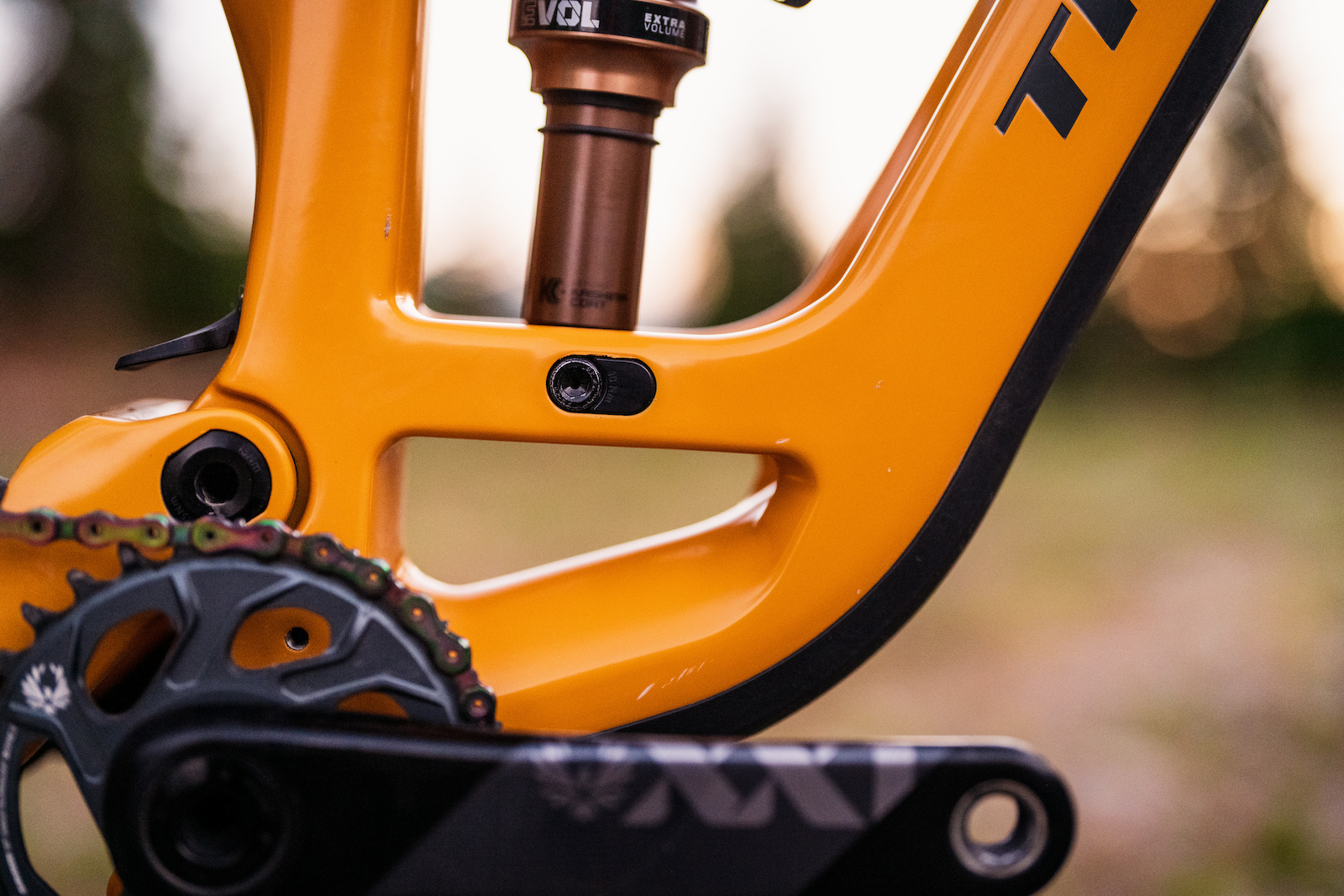
Cool Features
FIRST RIDE REVIEW
The new trek fuel ex review.
Photos & Words by Dario DiGiulio
As mountain biking has evolved into what it is today, the trails we ride on have slowly but surely raised the bar of what modern bikes have to keep up with. Sure, some tracks have been sanitized over time, but there’s no question that the pointy end of the sport has kept pushing forward. As a result, trail bikes have had to pick up the pace to match the expectations of the average rider, leading to more capable and confident rigs with every new model. Stepping up to the plate, we have the evolved version of the Trek Fuel EX, Trek’s mainstay trail bike. This time it’s really meant to do it all, riding anywhere and doing anything. Being this adaptable can be a tricky task though, so has Trek painted themselves into a corner?
The new Trek Fuel EX breaks just about every mold that the prior generations had fit into, with a full-on redesign for the new model. The name of the game here is adaptability, whether in the geometry, the suspension kinematics, or even what size wheels you’ll run. Thanks to their Mino Link flip chip and two sets of press-in headset cups, you can shift the character of this bike drastically to suit your terrain and preference. As a result, it’s a bit hard to parse out the specific geometry of the bike (however Trek’s site features a geometry tool to let you do so), so I’ll just speak to it in its most neutral form, which is where many will likely settle. There are a whopping 8 size variations to this bike from XS to XXL, so it’s worth digging through the geometry tables to see which might suit you best. They’re all sporting 140mm of rear travel with a 150mm fork, upping the numbers on the prior generation by 10mm.
I’ve been testing the large frame, which puts the reach and stack at around 485mm and 621mm, which are in line with the majority of the industry right now. In keeping with the new Trek Fuel EX’s theme of being adaptable and capable. In its neutral-low setting, the bike comes with a 64.5-degree head tube angle and the effective seat tube angle sits at 77.2-degrees. Chainstays shift with the frame size, and on a large come in at 440mm. Thanks to the Mino Link flip chip, you can adjust bottom bracket height by 8mm up from the slammed 38mm drop in stock configuration, with a 0.6° steeper head tube and seat tube angle. The more significant head tube adjustment comes from the independent press-in headset cups that Trek supplies, which can steepen or slacken things by a full degree, giving a very wide range of handling characteristics. The last frame toggle is the progression flip chip, offering a simple more or less option to tailor the suspension feel and offer uncompromised coil shock compatibility.
As is trend right now, you can set the Fuel Ex up as a mullet, simply by popping a 27.5” wheel in the rear, swapping the Mino Link to high mode, and bumping up fork travel to 160mm. The bike comes stock as a 29er front and rear (or 27.5″ in XS and Small), so you’ll have to make this change on your own accord.
A notable thing lacking from the newest Fuel EX its the Knock Block – you’ll find no such thing on this frame. X-up fans take note, as this is a big move for the engineers in Waterloo, Wisconsin, and was necessary to achieve the headset adjustment range they wanted. Trek has also moved away from the RE:aktiv damper shock, now simply relying on an off-the-shelf model. Still included in the frames are the handy-dandy stash box in the down tube, with what I think might be the best weather sealing of any of the options on the market at this point, and a neat BITS tool roll.
Build kits come in as many flavors as the sizes, and the range of options is quite extensive, beginning at a respectable $3,699. I’ve been on the highest end build, the 9.9 AXS especial, coming in at a healthy $10,749. From Bontrager Line 30 carbon wheels, to the RSL one-piece carbon cockpit, to the XX1 drivetrain, just about everything is as nice as it gets, as you’d hope for this kind of money.
At my height of 6’3”, the geo combination of the Neutral-Low-More flip chip configuration on the large size makes for a really comfortable fit, one that feels stable enough at speed while still remaining lively for your average trail. I started my time testing the bright yellow Trek up in Whistler, riding some gnarly rocky pedal-access trails around the Valley. This was a great context for deciding where I stood on the less or more progression debate, and I settled on the latter end of the spectrum. Increased bottom-out resistance and a more supple top of travel were worth a slightly punchier suspension feel, and I stand by that choice for most of the riding I have around me. On my home trails in Bellingham, the Fuel has been a choice companion for fast and fun rides in our local trail systems, where technical and engaging climbs lead to fast, rooty, and jump-filled descents. My general synopsis is that this is a bike that loves to ride fast, both up and down.
The climbing characteristics are comfortable and neutral, without wallowing too much or lacking grip in trickier terrain. Like many of the take-aways of the bike as it comes stock, things are extra-medium, in the best way. Compared to the new Hightower, the bike has slightly less support, but is significantly better in rough terrain and successive hits. Compared to the Stumpjumper EVO, the Fuel EX is definitely more of a trail bike, less of the all-mountain enduro-lite ride that the Specialized offers. All three bikes serve as a nice gradient from the lighter and sportier end of the trail spectrum to the burlier and more capable side of the category. Sitting pretty right in the middle is the Fuel EX, but I’m sure one could tweak it to either of the other extremes, given how much variability is baked into this frame.
Build kit notes are mostly positive, which you’d hope to see from the highest end build. My main gripe is with the Bontrager SE5 tires, which are some the least confidence-inspiring I’ve ridden in recent memory. The casing and tread pattern are fine, but the compound doesn’t seem to want to hook up anywhere, whether it’s dry loose terrain, rock slabs, and especially wet roots. This would be an immediate swap in my book, and I’d just keep the stock tires to run in the rear when conditions are dry and beat at the peak of summer.
The removable shuttle pad doesn’t seem to want to stay close to the frame, and bows out slightly when attached, giving the downtime a funny bulged look to it. One other frame annoyance has been a recurring suspension knock, despite chasing through every bolt in the linkage with a torque wrench. I still have yet to find the culprit, but luckily it’s not very noticeable when riding.
As a system, I’ve been more than impressed by Trek’s work on the new Fuel EX. Not only does it feel quick and confidant in the stock configuration, it also offers a whole host of layout options to better cater the bike to your preferences.
THE WOLF’S FIRST IMPRESSION
To close out our review of the new Trek Fuel Ex, it’s clear that Trek’s engineers and designers set out to design a bike that caters to that wide center of the market – the trail bike – where most riders spend their time, and where a bike can take many forms. In that goal, they found success. Sure some riders may feel the new Fuel EX has departed from what they were used to and liked about the bike, but many other riders will likely welcome the advancements in capability and confidence on the trail. The Fuel EX is a highly adaptable bike that feels comfortable in a really wide variety of terrain but doesn’t confuse itself for anything more or less. Bike riders, rejoice.
TREK FUEL EX 7
Price: $3,699.99
Frame: Alpha Platinum Aluminum, internal storage | 140mm Fork: RockShox 35 Gold RL | 150mm Shock: Fox Performance Float EVOL
Drivetrain: Shimano SLX/XT Brakes: Shimano MT420 4-piston
Wheelset: Bontrager Line Comp 30, Rapid Drive 108
TREK FUEL EX 8
Price: $4,299
Frame: Alpha Platinum Aluminum, internal storage | 140mm Fork: Fox Rhythm 36 | 150mm Shock: Fox Performance Float X
Drivetrain: Shimano XT M8100 Brakes: Shimano Deore M6120
TREK FUEL EX 9.7
Price: $6,249.99
Frame: OLCV Mountain Carbon, internal storage | 140mm Fork: Fox Rhythm 36 | 150mm Shock: Fox Performance Float X
Drivetrain: Shimano SLX/XT Brakes: Shimano Deore M6120
TREK FUEL EX 9.8
GX AXS Price: $7,699.99 XT Price: $6,749.99
Frame: OLCV Mountain Carbon, internal storage | 140mm Fork: Fox Performance 36 | 150mm Shock: Fox Performance Float X
Wheelset: Bontrager Line Elite 30, OCLV Carbon, Rapid Drive 108
GX AXS BUILD Drivetrain: SRAM GX Eagle AXS Brakes: SRAM CODE R
XT BUILD Drivetrain: Shimano XT M8100 Brakes: Shimano XT M8120
TREK FUEL EX 9.9
XX1 AXS Price: $10,749.99 XTR Price: $9,749.99
Frame: OLCV Mountain Carbon, internal storage | 140mm Fork: Fox Factory 36 | 150mm Shock: Fox Factory Float X
Wheelset: Bontrager Line Pro 30, OCLV Carbon, Rapid Drive 108
XX1 AXS BUILD Drivetrain: SRAM XX1 Eagle AXS Brakes: SRAM CODE RSC
XT BUILD Drivetrain: Shimano XTR M9100 Brakes: Shimano XTR M9120
LEAVE A COMMENT, WIN FREE SWAG!
Want to win some free schwag? Leave a comment and vote up the most thoughtful comments and each month we’ll pick a winner. The person with the smartest and most helpful replies will earn some sweet new gear. Join the Pack and get the latest news and read the latest reviews on the top mountain and electric mountain bikes .
- Rocky Mountain
- Specialized
- YT Industries
- Allied Cycle Works
- Black Market
- DALLINGRIDGE
- Diamondback
- Early Rider
- EVO Bicycles
- Growler Bikes
- Guerrilla Gravity
- iGO Electric
- Intense 951
- Juiced Bikes
- View all brands
- Production Privee
- Rad Power Bikes
- Rambo Bikes
- Riese & Müller
- Soul Fast E Bikes
- Spark Cycleworks
- State Bicycle Co.
- Structure Cycleworks
- Surface 604
- Van Nicholas
- Vintage Electric
- We Are One Composites

- Cross Country

- All Mountain
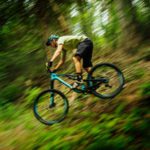
Trek Fuel EX 8 Gen 6
- AUS $ NZD $ USD $ CAD $ GBP £ EUR €
Colour / Galactic Grey to Black Fade, Matte Pennyflake
Size / XS 27.5"", SM 27.5", SM 29", MD 29", ML 29", LG 29", XL 29", XXL 29"
Weight / 34 lb 8.0 oz (15,650 g)
At a glance
- ABP (Active Braking Pivot) rear suspension design
- XS has 27.5″” wheels, SM available with 27.5″ or 29″ wheels, MD-XXL have 29″ wheels
- 29″ versions compatible with mixed (“Mullet”) wheel setups (29″ front, 27.5″ rear)
- Geometry adjustable via Mino Link flip chip in rear rocker link pivot
- Geometry adjustable via optional angle-adjust headset cups, for +1° and -1° head tube angle adjustments
- Internal frame storage compartment in down tube; includes Bontrager BITS storage bag
- Guided internal cable routing
- SRAM UDH (Universal Derailleur Hanger)
- Includes Bontrager TLR tubeless rim strips, valve stems, and sealant
- Weight given for size MD set up tubeless, Rear suspension leverage rate adjustable via flip chip at lower shock mount:
- Less progressive setting intended for a plusher feel perfect for rugged trails with square-edge bumps
- More progressive setting intended for hitting big features without bottom-out, or to run a coil shock
Where To Buy

Specifications
- Frame Alpha Platinum Aluminum, magnesium rocker link; molded chainstay, lower down tube, and shuttle guard protection
- Fork FOX FLOAT 36 Rhythm, EVOL, GRIP damper, 44mm offset, Kabolt thru-axle
- Shock FOX FLOAT X Performance, EVOL, 2-position lever, 185mm length x 55mm stroke
- Hubs Bontrager alloy, sealed bearings, 110x15mm Boost front, 148x12mm Boost rear with Rapid Drive freehub and MICRO SPLINE driver
- Wheels Bontrager Line Comp 30, tubeless ready
- Wheel Size 29" 27.5"
- Spokes Bontrager wheelset
- Tires Bontrager XR5 Team Issue, Inner Strength casing, aramid bead, tubeless ready, 2.5""
- Chain Shimano SLX M7100, 12-speed
- Crank Shimano Deore M6120, 170mm length
- Bottom Bracket Shimano MT501, 73mm English/BSA threaded
- Rear Derailleur Shimano Deore XT M8100, 12-speed, long cage
- Shifters Shimano Deore XT M8100, 12-speed
- Brakeset Shimano Deore M6120, 4-piston, Shimano RT66 6-bolt rotors (203mm front, 180mm rear), Shimano Deore M6100
- Handlebar Bontrager Line, alloy, 27.5mm rise, 35mm clamp diameter, Width: 750mm (XS/SM), 780mm (MD-XXL)
- Saddle Bontrager Arvada, hollow chromoly rails, 138mm width
- Seatpost TranzX JD-YSP39 dropper, 34.9mm, Single bolt Drop: 100mm (XS/SM) 150mm (MD/ML) 170mm (LG-XXL)
- Stem Bontrager Elite, 0° rise, 35mm bar clamp, Length: 35mm (XS/SM), 45mm (MD-XXL)
- Grips Bontrager XR Trail Elite, nylon lock-on
- Headset Integrated, cartridge bearings, compatible with optional angle-adjust headset cups
Q: How much is a 2023 Trek Fuel EX 8 Gen 6?
A 2023 Trek Fuel EX 8 Gen 6 is typically priced around $4,300 USD when new. Be sure to shop around for the best price, and also look to the used market for a great deal.
Q: How much does a 2023 Trek Fuel EX 8 Gen 6 weigh?
A 2023 Trek Fuel EX 8 Gen 6 weights 34 lb 8.0 oz (15,650 g).
Q: What size wheels does the 2023 Trek Fuel EX 8 Gen 6 have?
The 2023 Trek Fuel EX 8 Gen 6 has 29" and 27.5" wheels.
Q: What size 2023 Trek Fuel EX 8 Gen 6 should I get?
No comments on this bike yet. Why not be the first?
Leave a Reply Cancel reply
Your email address will not be published. Required fields are marked *
Want more MTB in your mailbox?
The latest on mountain bikes delivered straight to your mailbox.

More Bikes in Range View All

Trek Fuel EX 7
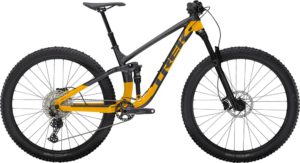
Trek Fuel EX 5
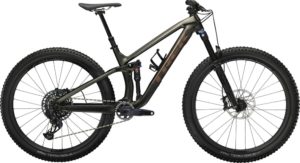
Trek Fuel EX 9.8 GX AXS
More enduro bikes view all.

Pivot Firebird Team XTR - Coil

Scott Genius LT 700 Plus Tuned
Scott TwinLoc TSP Technology, Adjustable geometry by way of a shock mount chip in the linkage

Focus Sam2 6.8
F.O.L.D. (Focus Optimized Linkage Design) kinematic suspension system, Internal cable routing, Optional: T.E.C. (Tailored Energy Concept) Pack range extender external battery, 378 Wh (10.5 Ah)
Deals View All
View all deals, recent posts view all.

Blackburn Honest Digital Pressure Gauge Review
It's 2020 people. The squeeze and bounce test doesn't cut it anymore (and this is…

Comparing Mountain Bikes
Mountain Bikes are complicated machines. They have parts from hundreds of different manufacturers, come in…
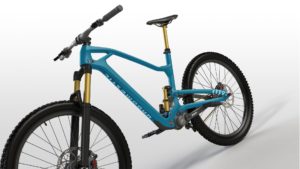
Undomestic Mountain Bikes: Here’s what we know
Update March 2020: Undomestic has announced that they are manufacturing frames "at this moment" and…
Send Feedback
Have a suggestion? Looking for a bike that's not on MTB Database? Or perhaps you've spotted an error?
We'd love to hear from you. Let us know with the form below.
This website uses cookies to ensure you get the best experience possible. Learn more.
About MTB Database
Explore, search and compare thousands of the world’s best mountain bikes here on Mountain Bike Database.
Compare prices, components, suspension, reviews, images and more on current and past MTB’s. You can even share reviews, comments and questions on mountain bikes. View and compare a huge selection of bikes from brands such as Trek , Specialized , Giant , Santa Cruz , Norco and more .
We strive to provide accurate and up-to-date information for mountain bikes on MTB Database. If you’ve spotted any issues, please let us know . We also include helpful tools, such as our frame size calculator, to assist you in choosing the right mountain bike. Bear in mind that these tools serve as a guide and simply provide a general indication. Refer to information provided by your bike manufacturer for the most applicable information for your bike.
Bikes By Brand
Bikes by year, bikes by riding style, bikes by wheel size, popular bikes.
- 2022 Specialized Epic EVO Comp
- 2022 Trek Marlin 6
- 2022 Specialized Enduro Comp
- 2022 Specialized S-Works Epic EVO
- 2022 Specialized Epic EVO Expert
- 2022 Giant Fathom 29 1
- 2022 Trek Marlin 7
Latest Bikes
- 2023 Commencal SUPREME DH V5 SIGNATURE 70'S
- 2023 Orange Phase 29 Factory
- 2022 Commencal META SX V4 TEAM Frame
- 2023 Commencal SUPREME DH V5 SIGNATURE LTD
- 2023 Commencal META SX V4 - Frame
- 2023 Riese & Müller Swing4 vario
- 2023 Riese & Müller Swing4 silent
On Test | Is the Trek Fuel EX 2023 the most forward-thinking trail bike out there?
Huge news in the trail bike world, the brand new 2023 Trek Fuel EX has landed and it looks like an absolute ripper! As we predicted when we tested the electrified Fuel EXe a couple of months ago, Trek is bringing many of the same updates to the non-motorised version. There are some surprises however, with the new Fuel EX adopting some of the innovations shown in the latest Session downhill bike, while also unveiling brand new tech that makes this one of the most versatile Trek mountain bikes we’ve ever seen.
Watch our video review of the Trek Fuel EX 2023 here:
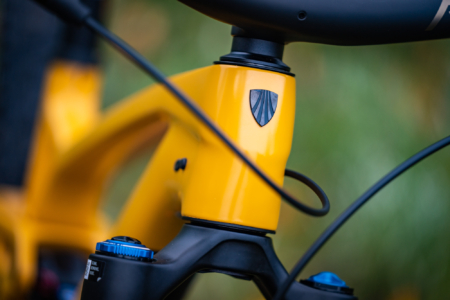
What’s changed with the 2023 Trek Fuel EX?
For 2023 the Trek Fuel EX receives an all-new frame design, and it also sees a 10mm increase in suspension travel. Stock bikes are now equipped with a 150mm travel fork, while the ABP platform delivers 140mm of rear travel.
Most frame sizes will come with 29in wheels, though the two smallest frame sizes will be available with 27.5in wheels. And as with previous models, the Fuel EX will be offered in both alloy and carbon variants.
With the aim of improving overall practicality, some of the features we’ve seen in the past have been eliminated from the new Fuel EX. The Knock Block headset is gone, and so too is the proprietary Thru Shaft shock and custom RE:aktiv damper. You’ll also no longer find a press-fit bottom bracket, with the Fuel EX moving to a more popular threaded BB shell.
Trek has also adopted guided internal cable routing, both on the carbon and alloy frames. The same goes for the integrated downtube storage. And as with the latest Trek Slash , there’s a new two-piece, dual-density, bolt-on armour plate for the downtube.
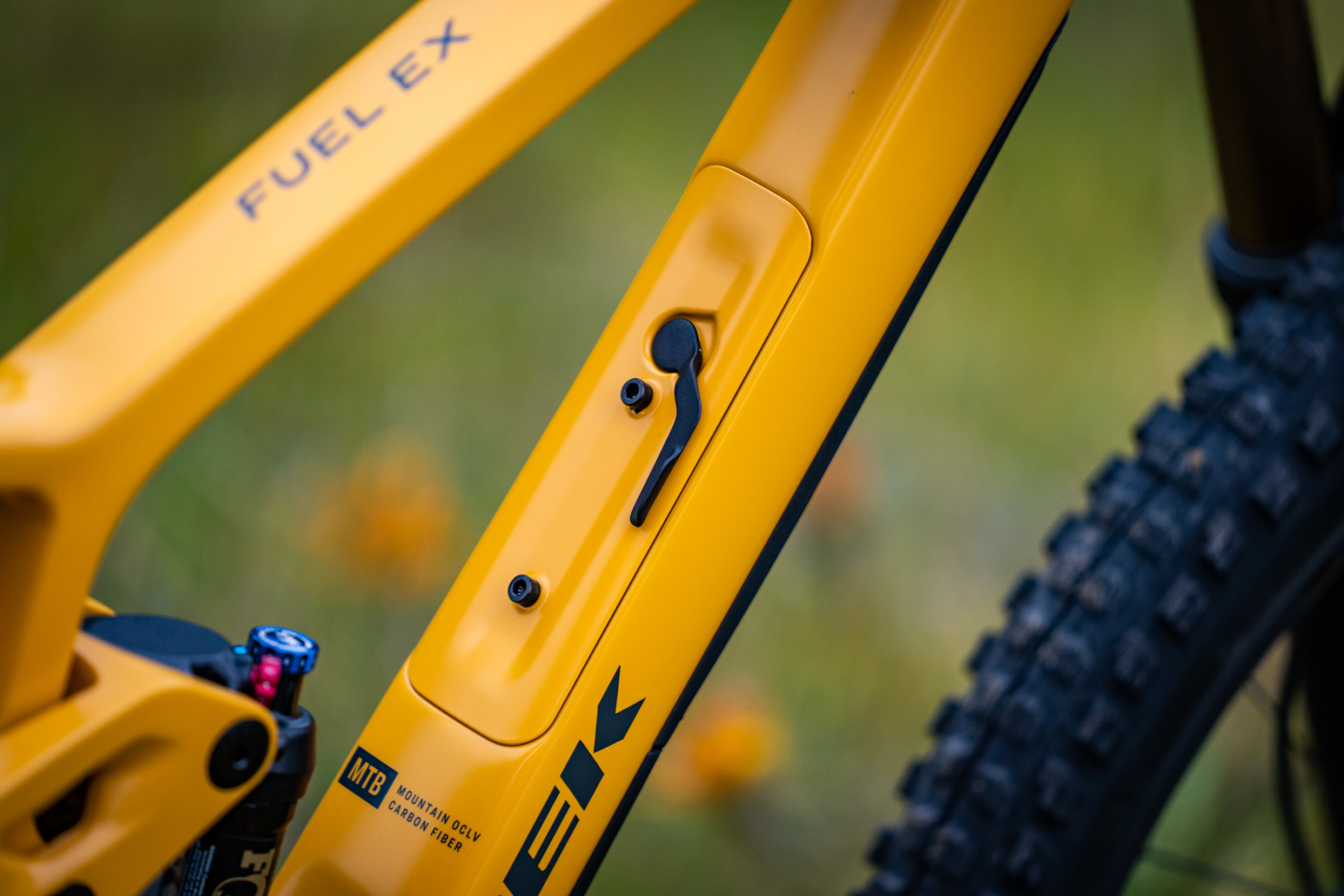
There’s huge versatility
For sure one of the most exciting aspects of the 2023 Trek Fuel EX is its in-built versatility.
Of course you’ll still find the Mino Link flip chip, which allows you to tweak the angles by 0.5° and the BB height by 8mm.
Adding to that, there’s now a flip chip at the lower shock mount for fine-tuning the suspension’s leverage rate. We first saw this on the Session downhill bike, and the concept is the same here with ‘More’ or ‘Less’ settings. The Fuel EX will come setup from the factory in the Less progressive setting, which delivers a plusher ride quality and is well suited to air shocks. Riders can flip the chip around to increase progressitivity for more support on bigger jump trails, which is also designed to work better with coil shocks. Yes, the new frame is coil shock compatible.
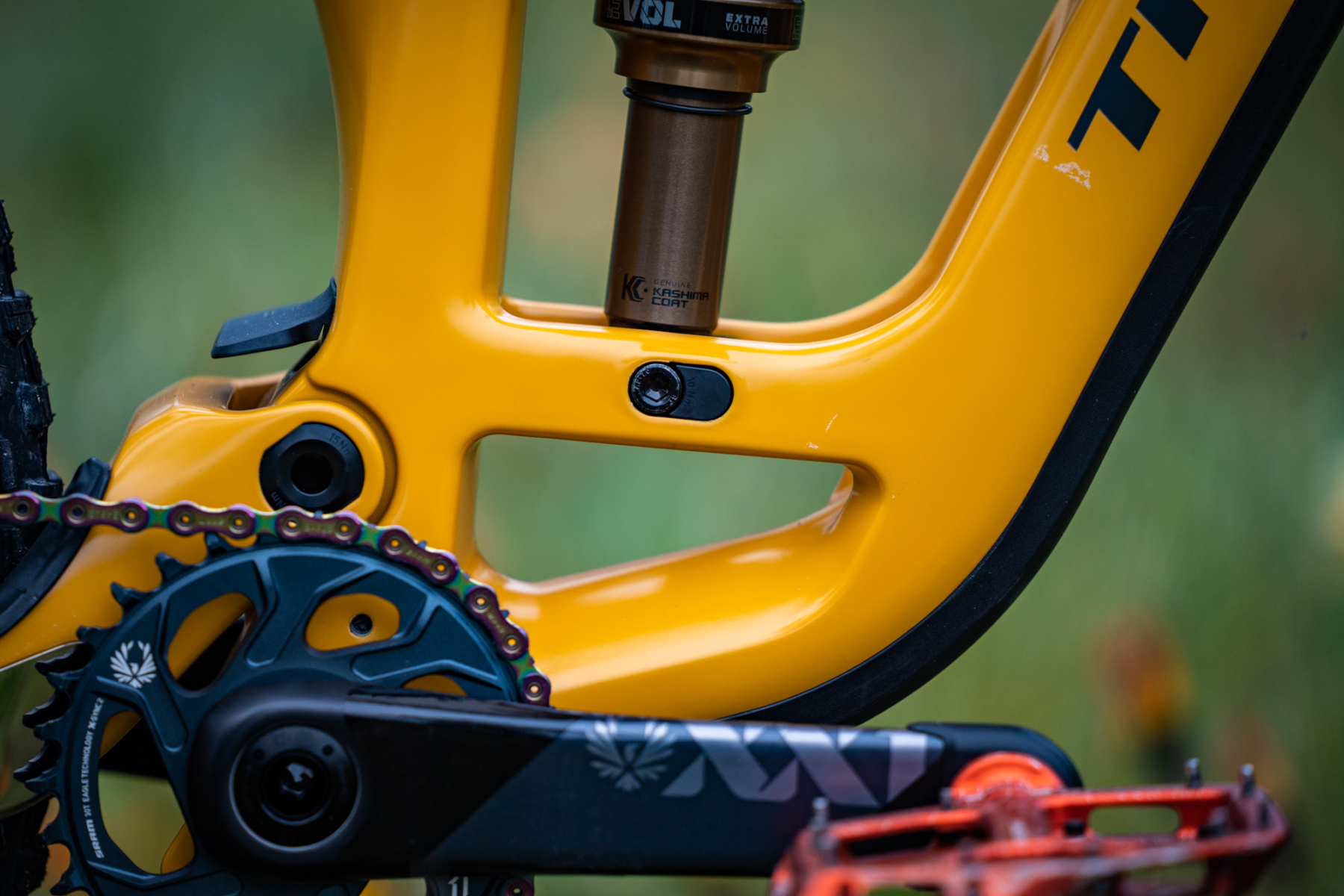
3-way head angle adjustment
Furthermore, you can now tweak the head angle independently on the new Trek Fuel EX.
Stock bikes will come with neutral headset cups, though Trek will also be offering an offset cup that allows you to slacken or steepen the head angle by 1°. The execution is different to the Specialized Stumpjumper EVO , with the Fuel EX utilising press-in headset cups that require a proper tool for removal and installation. Trek states this was done to provide a snug and secure interface, with less chance of the headset developing play or creaking over time.
Unfortunately the Fuel EX won’t come supplied with the offset headset cups. Those will be sold separately, and we understand they won’t be available immediately either. When they are available, owners will be able to set up the head angle to be as slack as 62.9° or as steep as 66°, which is wild!
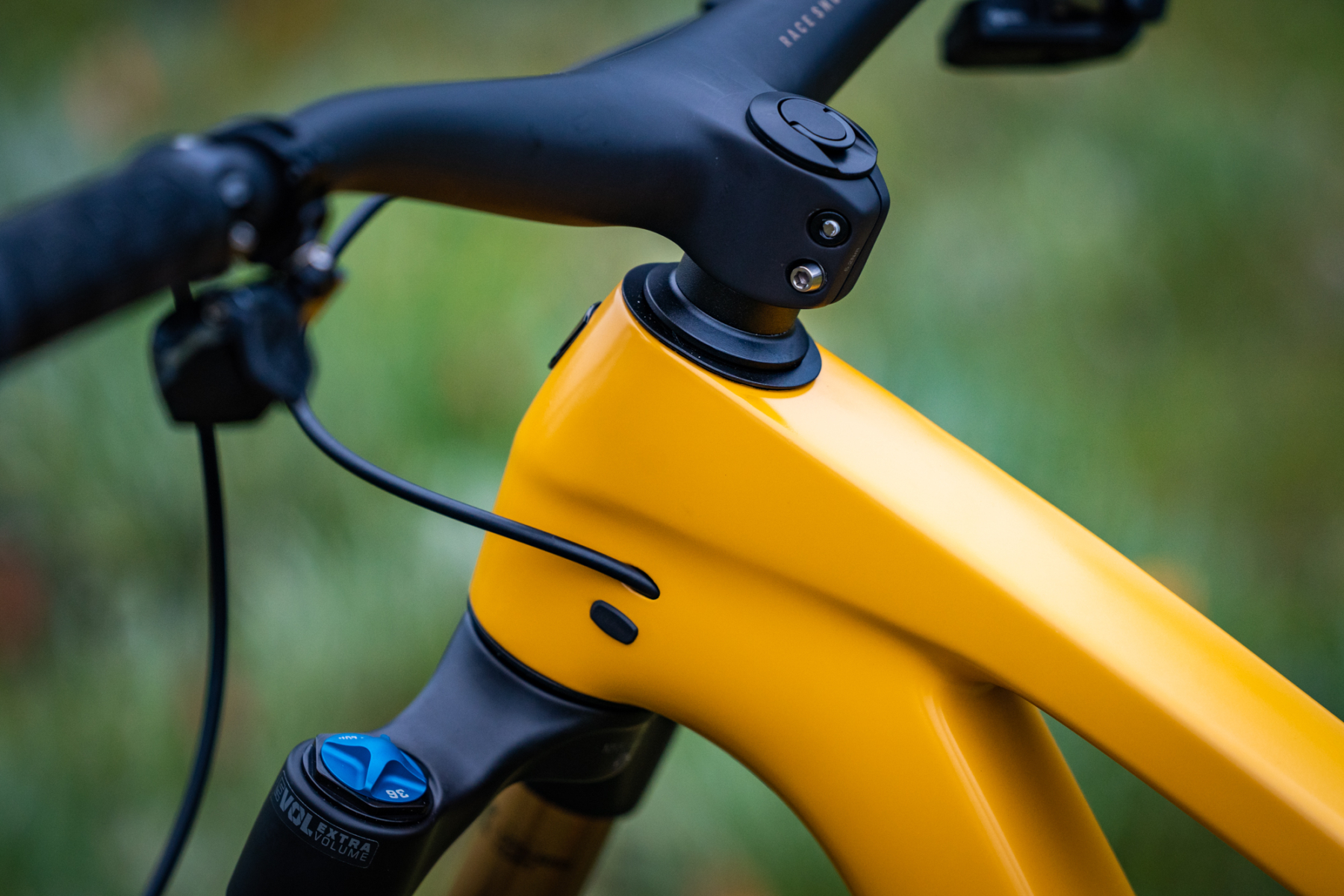
Oh, it’s mullet compatible too!
As if that wasn’t enough adjustment, the Trek Fuel EX can be setup as a mullet too. If you do decide to fit a 27.5in rear wheel, Trek recommends flipping the Mino Link in the High position, and it also suggests running a 160mm travel fork to help lift the BB height back up to its optimal position.
It’s worth noting that most of the stock Fuel EX models come with a Fox 36 fork, so it’ll be relatively easy to fit a 160mm air shaft to extend the travel without having to buy a whole new fork.

And big geometry updates
Along with the increase in travel, the 2023 Trek Fuel EX has also received a significant overhaul of its geometry.
In its stock configuration, the head angle has been slackened out to 64.5° and the effective seat angle has been steepened to around 77.5°. Reach measurements have grown, with a Medium frame now sitting at 450mm, and a Large at 485mm. All good stuff for a modern trail bike.
Perhaps more exciting however, is the adoption of size-specific rear centre lengths. By manipulating the suspension pivot locations on the front triangle, Trek’s engineers have been able to adjust the rear end length to better maintain weight distribution throughout the size range. On the smaller frames you’ll find a 435mm rear centre length, which grows to 450mm on the largest frame size.
Speaking of frame sizes, it’s worth acknowledging that Trek will be producing no fewer than eight sizes across the Fuel EX lineup. Yes, eight ! The XXL size will only be available in alloy, but it’s still fantastic to see given that most brands only produce 3-4 frame sizes.
Also of note is the move to a fatter 34.9mm seat tube diameter. Along with an increased insertion depth, the Fuel EX is designed to fit modern, longer-stroke dropper posts.

Trek Fuel EX price & specs
In Australia, there will be four models available in the 2023 Trek Fuel EX lineup. Prices will start at $4,999 AUD for the Fuel EX 7, and will top out at $8,999 AUD for the Fuel EX 9.8.
What about that gorgeous Fuel EX 9.9 model shown here? We understand that Trek Australia will be offering these in a limited number available through the Project One custom bike builder, though we’re still waiting to confirm pricing and availability.
If you’re looking for something on the other side of the spectrum, the previous generation Fuel EX 5 will carry over into 2023. This provides a more budget-friendly option at $3,799 AUD, though it does miss out on all of the frame and suspension updates.
Keen to know how the new bike rides? Check out our Trek Fuel EX review to find out how the new bike compares to the outgoing version and some of its biggest competitors.
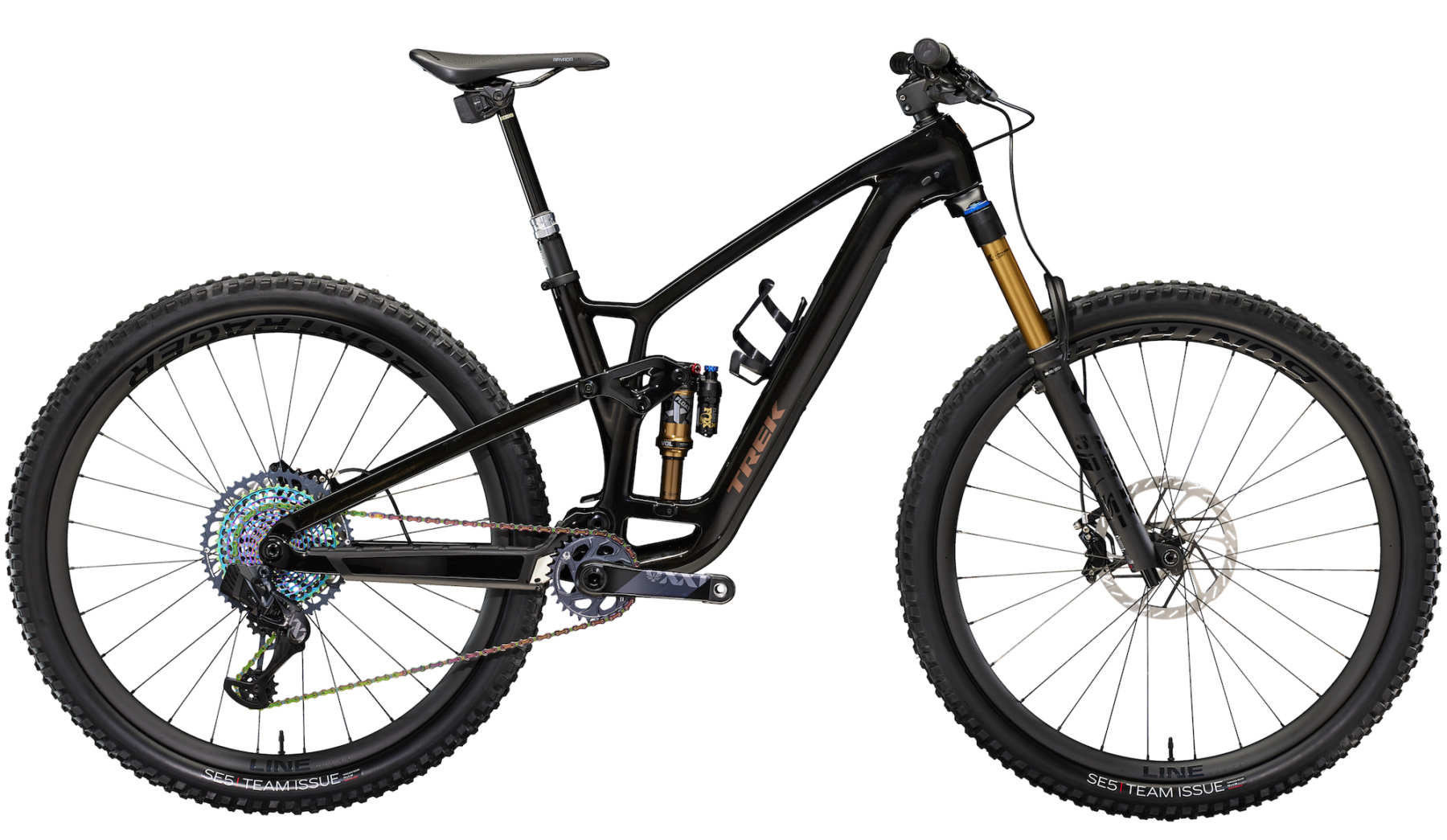
2023 Trek Fuel EX 9.9 XX1 AXS
- Frame | OCLV Mountain Carbon Fibre, ABP Suspension Design, 140mm Travel
- Fork | Fox 36, Factory Series, GRIP2 Damper, 44mm Offset, 150mm Travel
- Shock | Fox Float X, Factory Series, 185x55mm
- Wheels | Bontrager Line Pro 30, OCLV Carbon Rims, 29mm Inner Width
- Tyres | Bontrager SE5 Team Issue 2.5in Front & Rear
- Drivetrain | SRAM XX1 Eagle AXS1×12 w/30T Crankset & 10-52T Cassette
- Brakes | SRAM Code RSC 4-Piston
- Bar | Bontrager RSL Integrated, OCLV Carbon, 27.5mm Rise, 820mm Width
- Stem | Bontrager RSL Integrated, OCLV Carbon, 45mm Length
- Seatpost | RockShox Reverb AXS, 34.9mm Diameter, Travel: 100mm (S), 150mm (M-M/L), 170mm (L), 200mm (XL)
- Saddle | Bontrager Arvada, Austentite Rails
- Claimed Weight | 14.11kg
- RRP | $TBC
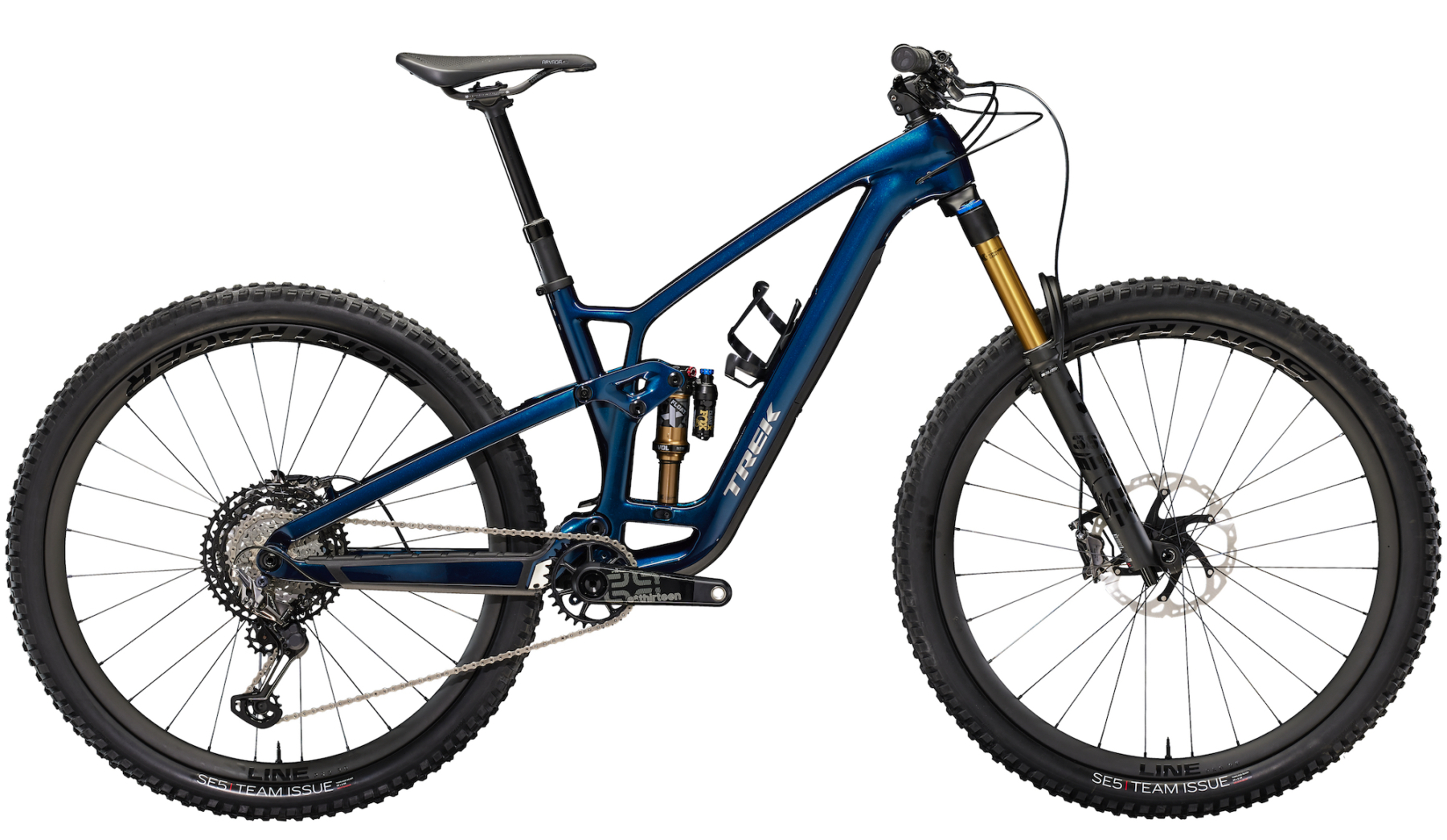
2023 Trek Fuel EX 9.9 XTR
- Drivetrain | Shimano XTR 1×12 w/e*13 TRS Race Carbon 30T Crankset & 10-51T Cassette
- Brakes | Shimano XTR 4-Piston
- Seatpost | Bontrager Line Elite, 34.9mm Diameter, Travel: 100mm (S), 150mm (M-M/L), 170mm (L), 200mm (XL)
- Saddle | Bontrager Arvada Pro, Carbon Rails
- Claimed Weight | 13.7kg

2023 Trek Fuel EX 9.8 XT
- Fork | Fox 36, Performance Series, GRIP Damper, 44mm Offset, 150mm Travel
- Shock | Fox Float X, Performance Series, 185x55mm
- Wheels | Bontrager Line Elite 30, OCLV Carbon Rims, 29mm Inner Width
- Drivetrain | Shimano XT 1×12 w/30T Crankset & 10-51T Cassette
- Brakes | Shimano XT 4-Piston
- Claimed Weight | 14.33kg
- RRP | $8,999 AUD
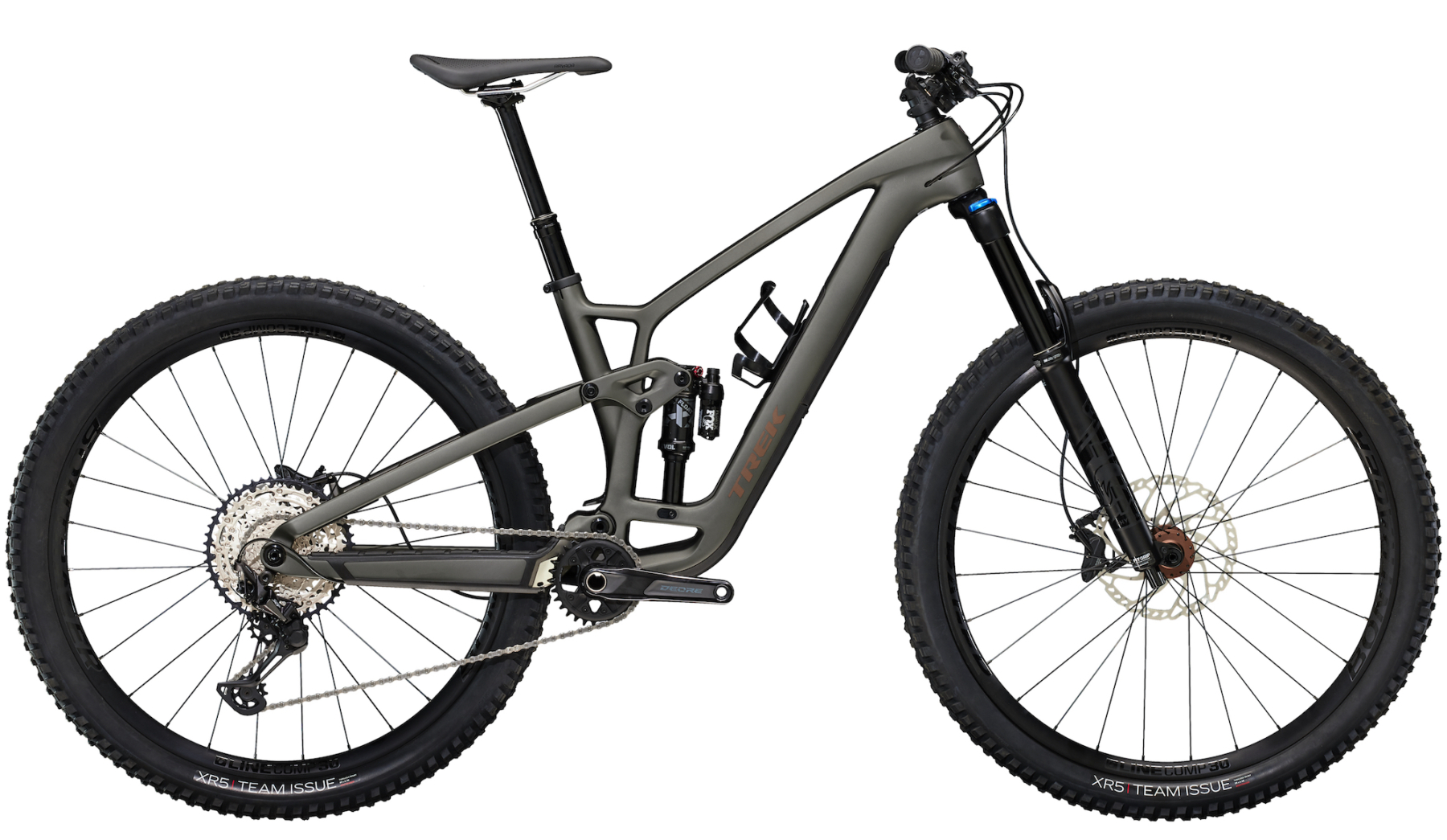

2023 Trek Fuel EX 9.7
- Fork | Fox Rhythm 36, GRIP Damper, 44mm Offset, 150mm Travel
- Wheels | Bontrager Line Comp 30, Alloy Rims, 29mm Inner Width
- Tyres | Bontrager XR5 Team Issue 2.5in Front & Rear
- Drivetrain | Shimano SLX 1×12 w/30T Deore Crankset & 10-51T Cassette
- Brakes | Shimano Deore 4-Piston
- Bar | Bontrager Line, 27.5mm Rise, 780mm Width
- Stem | Bontrager Elite, 45mm Length
- Seatpost | TranzX Dropper, 34.9mm Diameter, Travel: 100mm (S), 150mm (M-M/L), 170mm (L), 200mm (XL)
- Saddle | Bontrager Arvada, Chromoly Rails
- Claimed Weight | 14.76kg
- RRP | $6,999 AUD
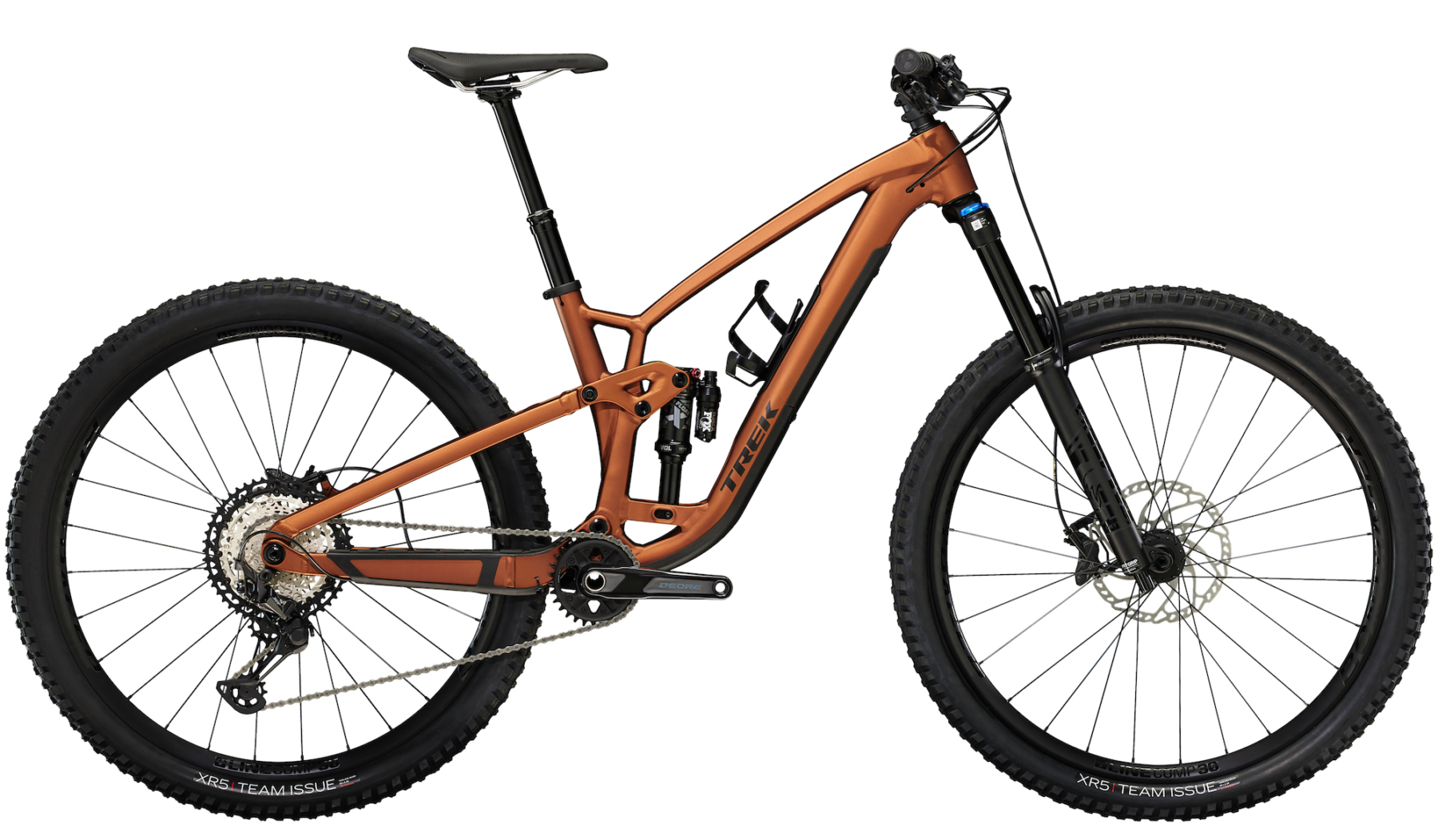
2023 Trek Fuel EX 8
- Frame | Alpha Platnium Alloy, ABP Suspension Design, 140mm Travel
- Drivetrain | Shimano XT 1×12 w/30T Deore Crankset & 10-51T Cassette
- Claimed Weight | 15.65kg
- RRP | $5,999 AUD
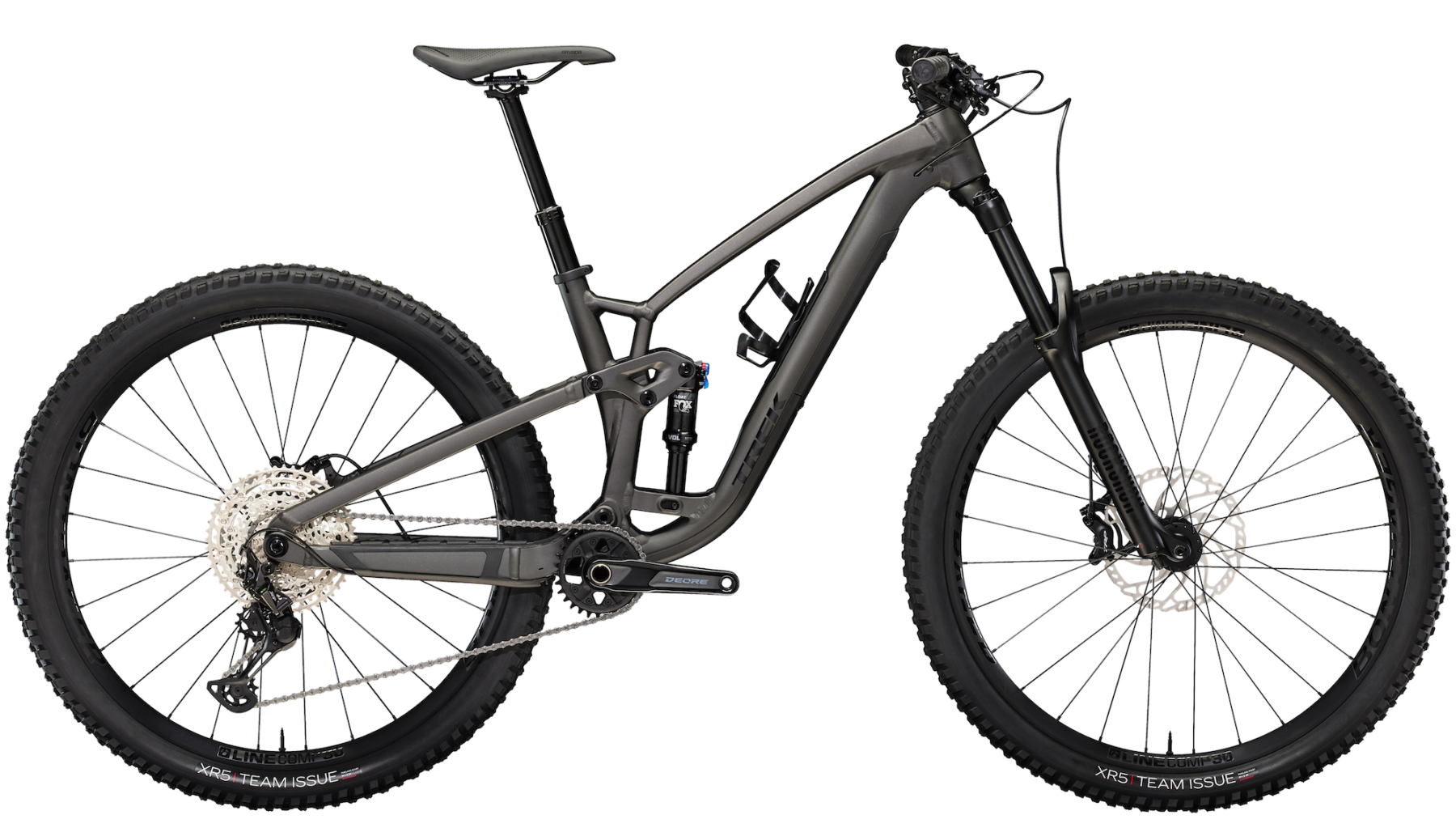
2023 Trek Fuel EX 7
- Fork | RockShox 35 Gold RL, Motion Control Damper, 44mm Offset, 150mm Travel
- Shock | Fox Float DPS, Performance Series, 185x55mm
- Drivetrain | Shimano Deore 1×12 w/30T Crankset & 10-51T Cassette
- Brakes | Shimano MT420 4-Piston
- Bar | Bontrager Rhythm, 15mm Rise, 750mm Width
- Stem | Bontrager Alloy, 50mm Length
- Saddle | Bontrager Arvada, Steel Rails
- Claimed Weight | 15.97kg
- RRP | $4,999 AUD
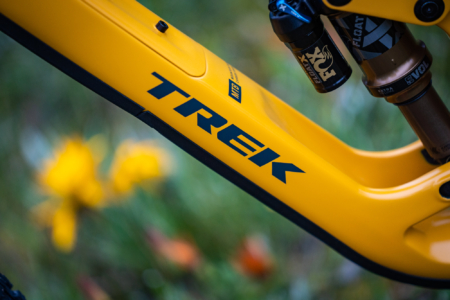
- Submit for Review
- Terms & Conditions
Enjoy reading this?
Get similar articles delivered directly to your inbox
- Help Center
- Chat with a Ride Guide
- 1-866-401-9636
- Retail Store
- Bike Services
Reset Password
We will send you an email to reset your password.
Don't have an account? Create an account
Create Account
Already have an account? Sign In
- Favorite your products & save them to your account
- Save a search & get notified when new products drop
- Be first to know about the latest events & promotions
Bike Finder
Results have arrived, trek fuel ex 8 27.5 plus mountain bike - 2018, 21.5", item #bmt27943, condition: certified pre-owned what's this, fit range: 6'2" - 6'5" sizing guide, every certified pre-owned bike passes our multi-point inspection.
- Frame integrity verified
- All components inspected
- Drivetrain cleaned and tuned
- Suspension adjusted
- Wheels trued
Our RideFast shipping means this bike gets to you quickly and securely. Domestic US ground rates are a flat $135 for regular bikes or $150 for e-bikes.
Quick Assembly
- Bikes arrive tuned and mostly pre-assembled
- Torque tool & video guide included
- Get riding in 15 minutes
Canadian Customers
Please note that any duties, taxes, or surcharges as required by Canadian customs and provincial authorities will be the buyer's responsibility. Shipping to Canadian addresses may take longer than expected due to customs.
Guaranteed Buyback
We'll happily purchase this bike back from you when you're ready for your next upgrade. A TPC buyback offer is guaranteed for 18 month on all qualifying bikes.
30-Day Returns
If this bike isn't perfect for you, our Ride Guides will help you find the right one.
Quiver Killer Trail Bike
The Fuel EX is the definition of a modern trail bike, and is Trek’s most well-rounded MTB. With more travel than the Top Fuel and less travel than the Remedy, it’s capable on descents and quick on climbs. Meet your ticket to fast and fun.
- Capable on all trails; it’s intended to be your only MTB
- Poppy, supportive mid-travel takes hits and excels in corners
- Modern geometry puts you in position to climb and descend with conviction
- Flip chip allows customizable geometry for your trails
- New models feature integrated downtube storage
- The fork has been professionally serviced by our in-house suspension experts and is ready to ride.
- New KMC chain & SRAM cassette
- New PRO Koryak dropper seatpost
- New bottom bracket
- New brake pads
- Moderate scratches on the top tube, seat tube & down tube
- Moderate scratches on the chainstays & seatstays
- Moderate scratches on the fork lowers
- Moderate scratches on the crank arms
- Small cosmetic paint chips on the top tube
Added to Cart
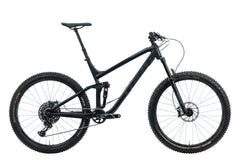
Inspected. Tested. Trusted.
What is cpo.
CPO bikes are gently ridden bikes that have been meticulously inspected, restored and serviced. Every CPO bike is cleaned, tuned and tested in our top-of-the-line Colorado headquarters. Road, mountain, ebike or gravel, TPC services each bike over 8 phases and multiple points of inspection.
Bikes are meant to be used.
Ask a Ride Guide about this
Sizing guide.
The chart below provides a general suggested range of heights and is not exact. Sizing may vary across brands.
The tailoring of any bike is an important step in the long term enjoyment of riding and it can take time to adjust to the fit of a new bike. All contact points (pedals, shoes, and saddle) can be changed and altered for personal preference, performance, and comfort.
Contact our Ride Guides if you have any questions about the fit of your new bike.
866.401.9636 - Contact the Ride Guides
Purchase your next bike with the same confidence you would when buying new. We scrutinize age, condition, and quality. If a bike meets the standard, our pro tune and service will guarantee that your ride will be in pristine condition when it arrives at your door.
- MAGAZINE OFFERS
- BIKE INSURANCE
- Best Products
- Maintenance
- Accessories
- Long-Term Reviews
- BikeRadar Podcast
- First Look Friday
- Bike of the Week
- Tech Features
- Routes and Rides
- Bike Galleries
- BikeRadar Bargains
- Buyer's Guides
- Fitness & Training
- Sizing & Fit
- Mountain Biking UK
- Cycling Plus
- Bike of the Year 2024
2020 Trek Fuel EX ditches Full Floater suspension, gets progressive geometry and onboard storage
The trail-orientated Fuel EX gets a modern makeover to appeal to more riders with a broad range of build kits and new features
The new Trek 2020 Fuel EX has been designed from the ground up, ditching the brand's signature Full Floater suspension system, adopting more progressive geometry, gaining onboard storage and getting a more broad selection of build kits to suit all budgets.
First launched nearly 15 years ago, Trek’s Fuel EX has somehow managed to span the range of being an entry-level mountain bike while at the same time appealing to hardcore all-day epic trail riders.
- Trek Domane SLR 9.9 Project One first ride review
- Marin Rift Zone 1 review
Since the bike first launched we’ve seen plenty of changes in the range including suspension technology and travel — initially the bike was offered with just 100mm of travel, growing over its lifespan and the bike’s seen the addition of Trek’s different suspension technologies such as the Full Floater, RE:aktiv, Mino Link and Thru Shaft.
Geometry trends have changed, too, and the Fuel range has reflected this. Starting out as an XC-orientated bike, the Fuel EX has morphed into something that’s likely to be more at home on a wider variety of trails. Trek even mention the ‘e’ word in its marketing spiel — yes, the Fuel EX even has enduro riders in its sights.
2020 Trek Fuel EX updates and changes
What has Trek changed on the new model, then?
2020 Trek Fuel EX geometry
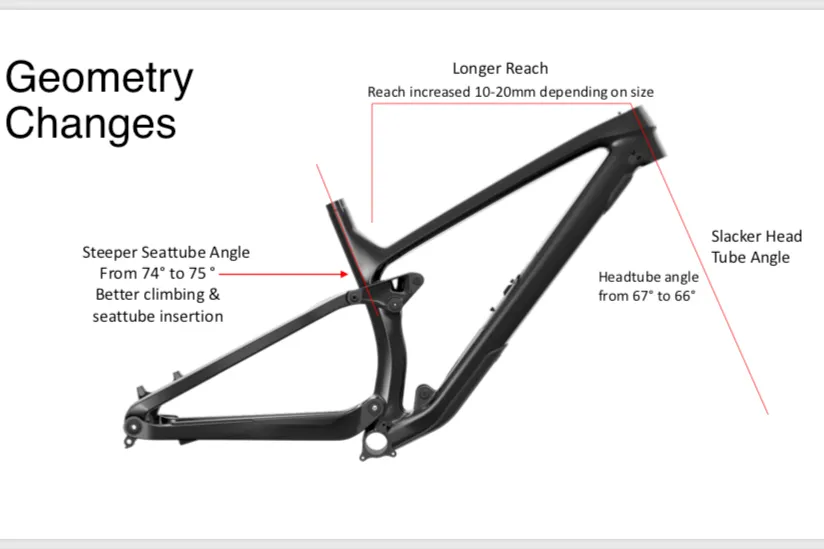
In the same way riders chase the proverbial perfect trail, most bike companies are chasing the longer, lower and slacker mantra with their bikes. Trek’s new Fuel EX is no exception to that rule.
Aiming to appeal to more riders, and quite possibly more extreme riders, from the outgoing model the bike’s gained a 10 to 20mm reach increase (depending on size), a 1-degree slacker head angle taking the figure down to a respectable 66 degrees and, most impressively yet, a steeper seat tube angle that’s climbed to 75 degrees.
- What’s the future of MTB geometry?
These figures should mean the bike’s more at home when you’re riding harder and faster — offering a more stable chassis. There’s no detrimental effect for beginners, either, who’ll reap the benefits of a bike that doesn’t feel like it’s jumping around like a cat on a hot tin roof.
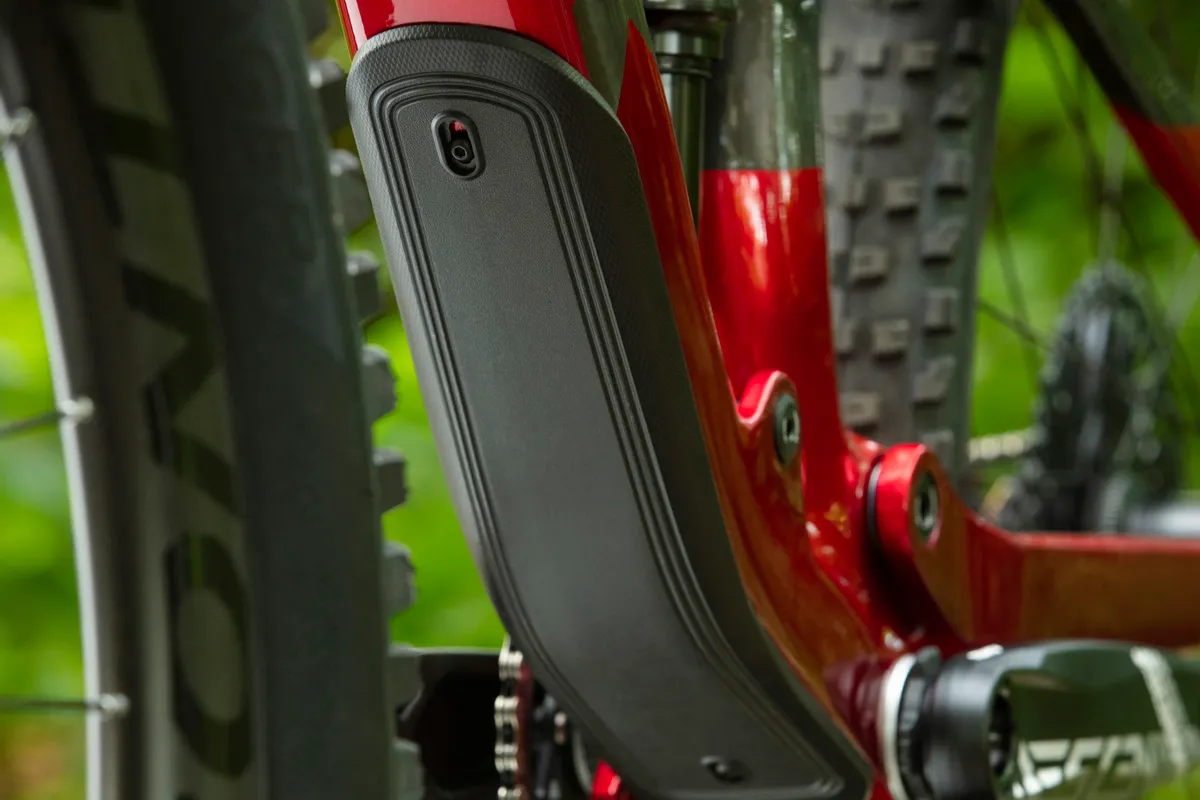
There’s also a broad range of sizes that start at extra small, running through to extra-extra-large. In the range, there are two small sizes: one for 27.5-inch wheels and one for 29-inch wheels.
In a welcome move, a medium and a medium-large size also rear their head. This bridges the gap between the medium and large bikes for people who’d normally sit between the sizes. Top work, Trek!

You also get a high and low setting thanks to Trek’s Mino Link flip-chip that’s located on the seatstay to rocker link. Changing from low to high adjusts the head angle from 66 to 66.5 degrees, the seat tube angle from 75 to 75.5 degrees and reduces the bottom bracket drop, shortens the chainstay and the wheelbase among other numbers.
- Seat tube length: 450mm
- Seat tube angle: 75/75.5 degrees (low/high)
- Head tube length: 105mm
- Head tube angle: 66/66.5 degrees (low/high)
- Effective top tube: 634/633 mm (low/high)
- Bottom bracket height: 346mm
- Wheelbase: 1,211/1,210mm (low/high)
- Standover: 748/754mm (low/high)
- Reach: 470/754mm (low/high)
- Stack: 613/609mm (low/high)
- Notes: Measurements for size large bike, full measurements available on Trek's website .
2020 Trek Fuel EX frame details
Not only has the bike’s geometry been modernised — Trek has also worked hard to accommodate the modern, discerning mountain biker.
You can now fit a 29 x 2.6-inch tyre on the back of the bike and Bontrager XR4 2.6-inch wide rubber is standard on all models of the Fuel EX.
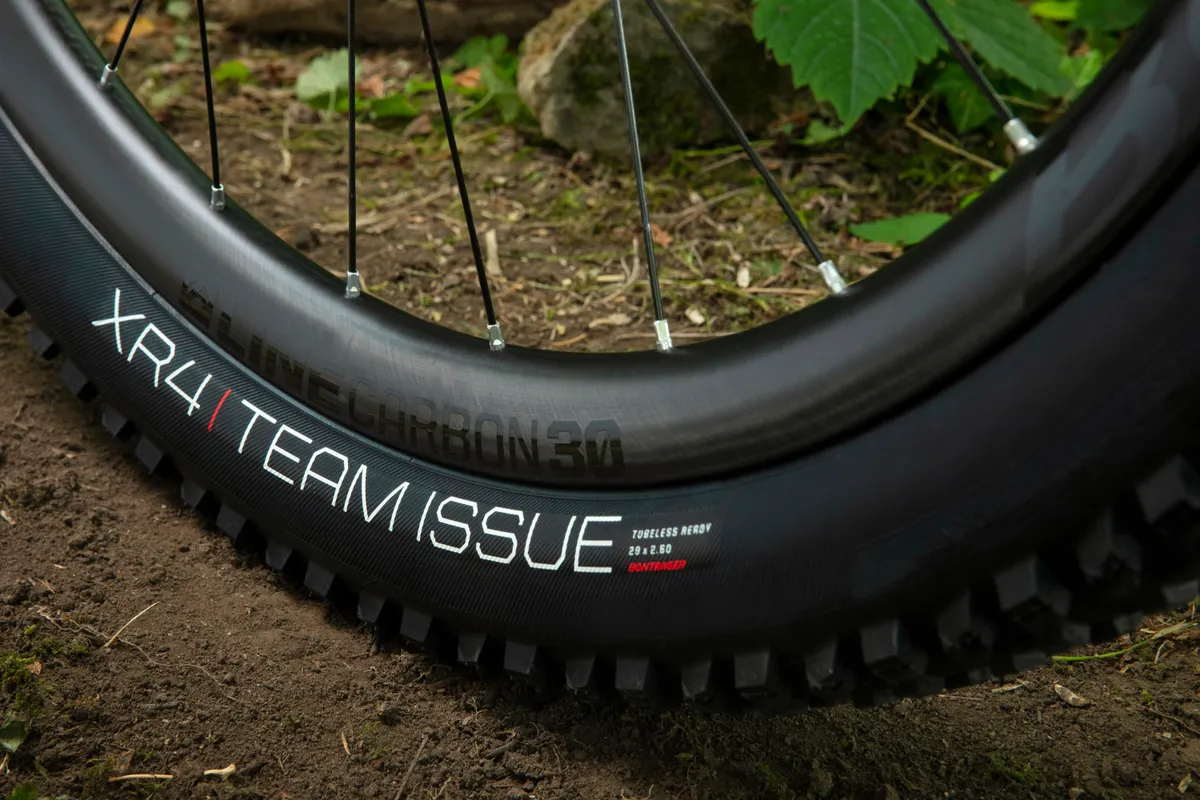
Trek has also managed to increase the range of dropper travel possibilities on its bikes. The extra-small and small bikes get 100mm travel posts, while the medium and medium-large bikes have a 150mm travel post. The large, extra-large and extra-extra-large sizes are treated to a 170mm post.
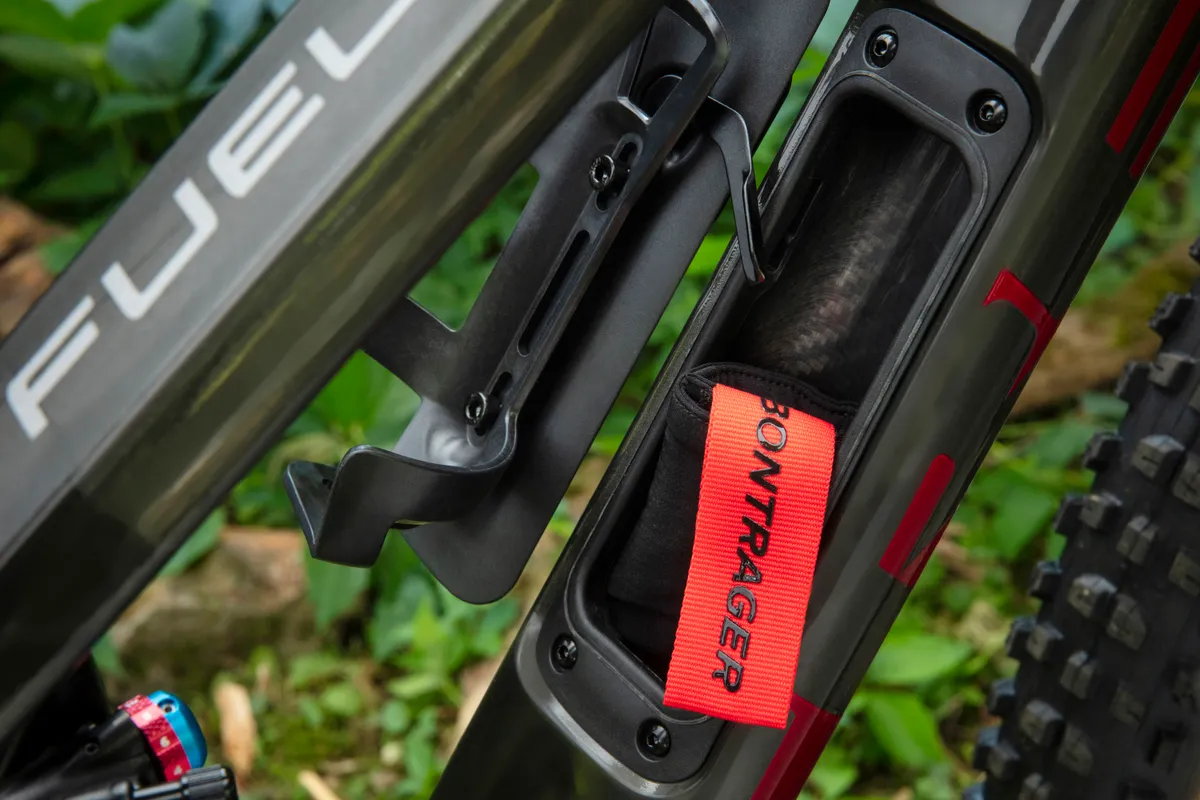
In another welcome move, the Fuel EX gets on-board storage in the bike’s down tube. The storage’s hatch doubles up as a bottle cage and every Fuel EX is supplied with a Bontrager tool roll that’s got handy compartments to store your bits and bobs — a similar system was adopted on the very recently released Trek Domane road bike .
The Fuel EX comes in two materials: a cheaper alloy version and a full carbon affair that has a carbon mainframe, seat and chainstays. The carbon model gets a dedicated down tube protector, too.
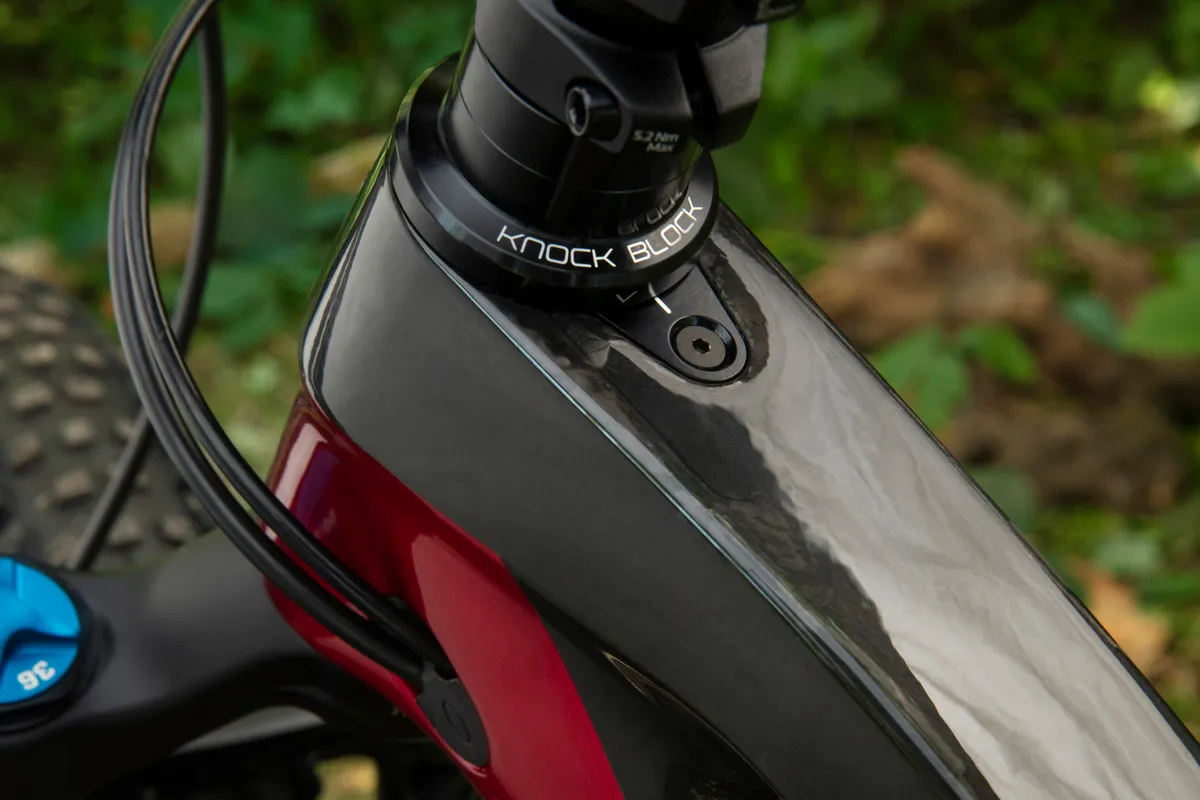
You’re also treated to Trek’s Knock Block system, which physically stops the bars turning beyond a certain angle to stop the bars, shifters or brake levers and fork crowns damaging both the top or down tubes.
There’s Trek’s Control Freak internal cable routing throughout that’s also Di2 compatible, so if you’re looking to upgrade in the future you’ve got the option of doing away with antiquated analogue gear shifting.

Trek also states that all of its Fuel EX bikes have a lifetime warranty.
2020 Trek Fuel EX suspension details
In a rather bold move Trek has done away with its signature Full Floater suspension system that has been seen on the Fuel for some years. This arangement mounted the shock to both the linkage and the chainstay in front of the main pivot, which meant that the shock didn’t have a fixed mounting point — as the suspension compresses, so did the shock’s relative position.
Now, though, the rear shock mounts to a fixed point on the down tube at the junction of the seat tube, like traditional suspension designs.
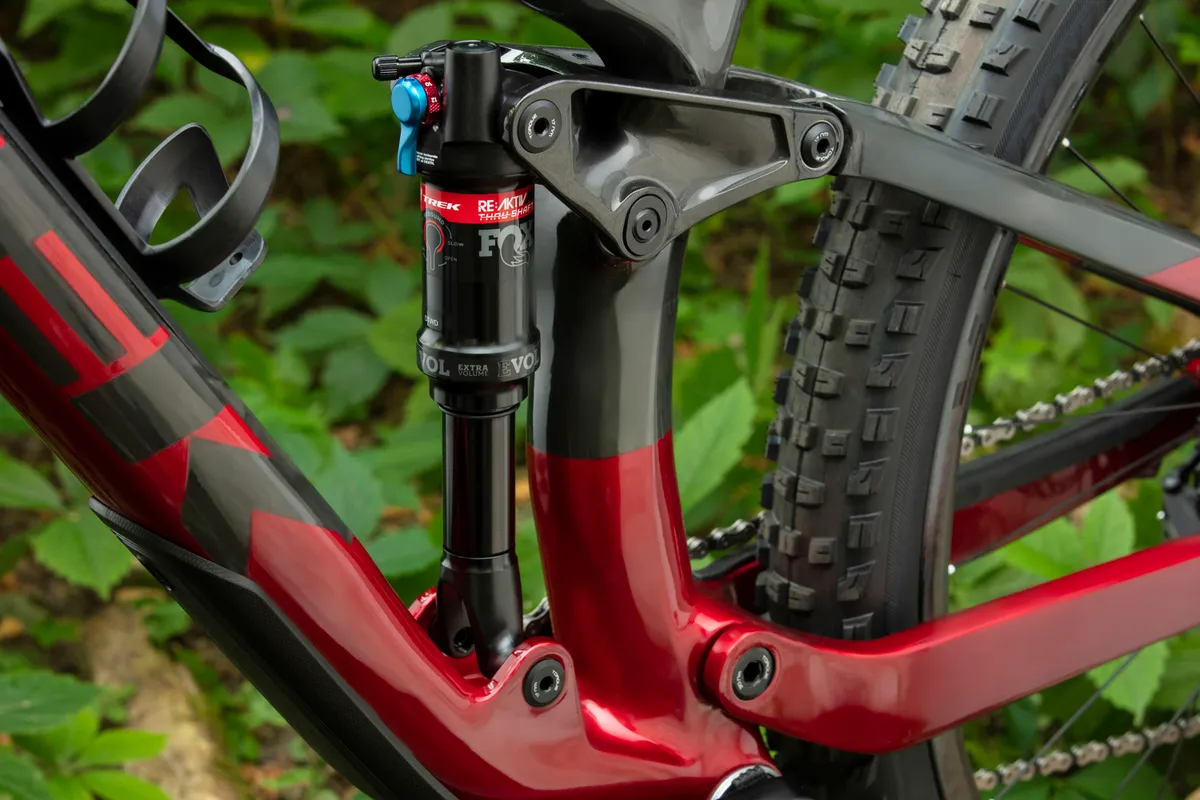
Trek claims that doing away with its Full Floater technology means that the frame can be stiffer, tyre clearance can be increased and there’s no loss in suspension performance.
It's worth noting that, at the time it was used on the bike, Trek claimed that its Full Floater system meant that the shock’s leverage ratios could be soft off the top, give plenty of mid-stroke support and help increase bottom-out resistance. It also claimed that a Full Floater bike felt like it had more travel than it actually does.
To then go on and claim that there’s no loss in suspension performance after doing away with this system begs the question of why it was implemented in the first place.
Trek’s Active Braking Pivot (or ABP for short), unlike the Full Floater, avoids the chop on the latest Fuel EX. And like previous iterations of Trek models with the system, it claims it helps to increase suspension performance under braking.

The Fuel EX 9.8 and 9.9 models are adorned with the stiffer, burlier Fox 36 fork that hints at the bike’s capabilities and intended use. The rest of the range gets a mix of Fox 34, RockShox 35 Gold and Recon forks so there’s a good balance of intended use in the range.
Except for the Fuel EX 5 and 7, you get Trek’s RE:aktiv suspension technology on the whole range. This, Trek claims, helps to be supple on small bumps and push deeper into the travel, but is firm while you’re pedalling without having to flick levers.
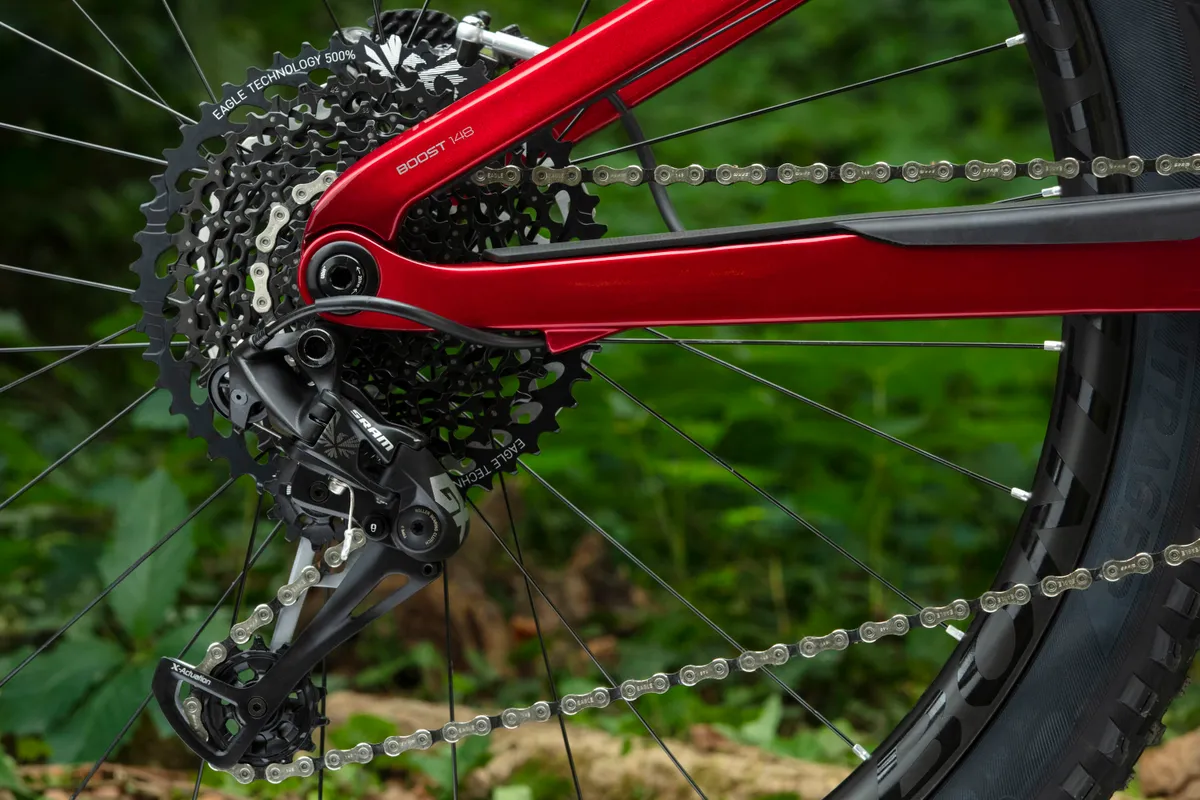
From the 9.8 model upwards, you also get Thru Shaft technology. This is where Trek has got rid of the internal floating piston in the rear shock, creating a system where there’s no oil volume displacement as the suspension compresses and extends.
2020 Trek Fuel EX women’s specific models
Trek’s also launching a full range of women’s specific models that will feature two colourways on all models, a wide range of sizing options, including two small sizes with the choice of 27.5- and 29-inch wheels, and plenty of standover height.
2020 Trek Fuel EX pricing and availability
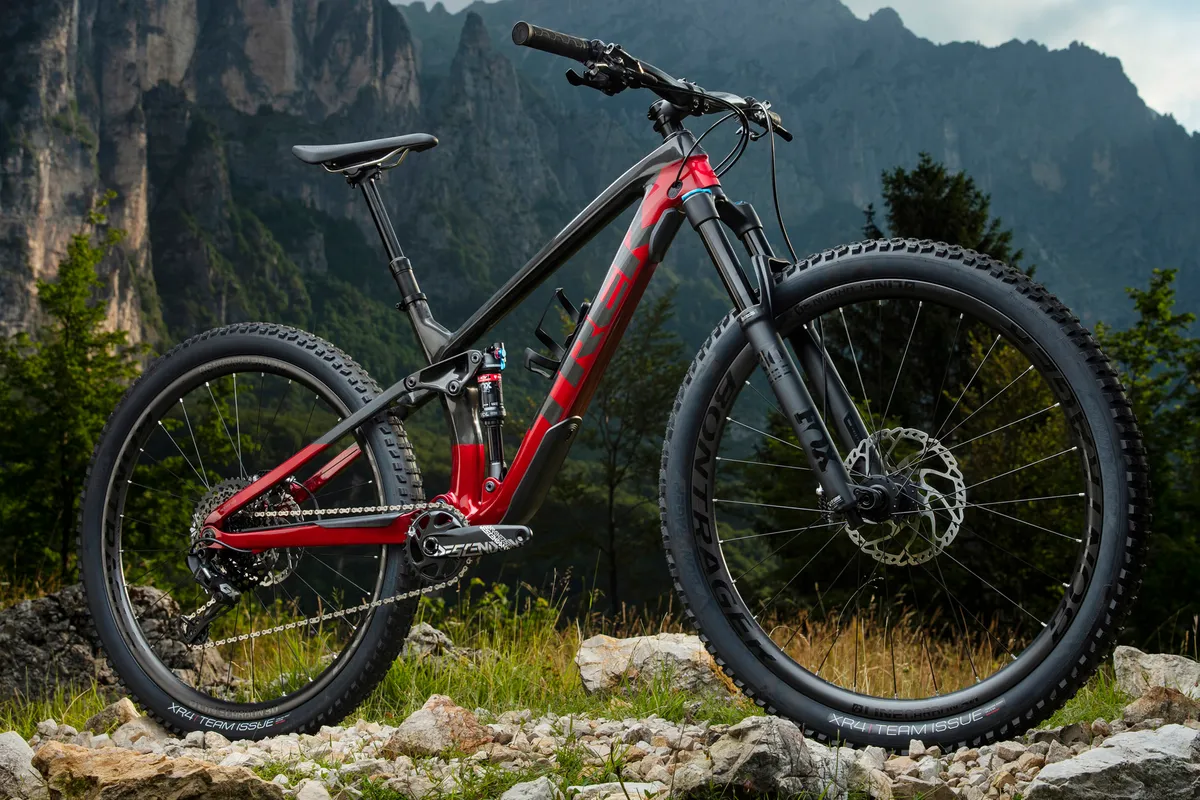
The Fuel EX ranges from £1,850 / $2,099.99 / AU$3,000 / €2,099 for the bottom spec EX 5 up to £8,000 / €9,099 for the top of the range EX 9.9 X01 AXS model.
The bikes are available from October on Trek’s website and your local Trek retailer.
2020 Trek Fuel EX specifications
Trek fuel ex 5.

- Frame : Aluminium, tapered head tube, Knock Block, Control Freak internal cable routing, ISCG05, Mino Link, ABP, Boost 148, 130mm travel
- Shock : RockShox Deluxe Select Plus
- Fork : RockShox Recon RL, Boost 110, 140mm travel
- Wheels : Bontrager alloy, sealed bearing, alloy axle, Shimano freehub, 148 x 12 rear, 110 x 15 front, Alex MD35 rims
- Tyres : Bontrager XR4 Team Issue, tubeless ready, Inner Strength sidewalls, aramid bead, 120TPI, 29 x 2.60in
- Shifter : Shimano Deore M6000, 10-speed
- Rear derailleur : Shimano Deore M6000
- Cassette : SunRace, 11-42, 10-speed
- Cranks : Race Face Ride, 30-tooth chainring
- Saddle : Bontrager Arvada
- Seatpost : TranzX JD-YSP18, 130mm travel
- Bar, stem and grips : Bontrager alloy, Bontrager Rhythm Comp, Bontrager XR Trail Comp
- Brakes : Shimano hydraulic disc, MT201 lever, MT200 caliper
- Price : £1,850 / $2,099.99 / AU$3,000 / from €2,099
Trek Fuel EX 7

- Shock : Fox Performance Float EVOL, 3-position DPS damper
- Fork : RockShox 35 Gold, Boost 110, 140mm travel
- Wheels : Bontrager Line Comp 30, tubeless ready, Boost 110 front, Boost 148 rear
- Shifter : SRAM NX Eagle, 12-speed
- Rear derailleur : SRAM NX Eagle, 12-speed
- Cassette : SRAM PG-1230 Eagle, 11-50, 12-speed
- Cranks : SRAM NX Eagle, DUB, 30-tooth chainring
- Brakes : Shimano hydraulic disc, MT401 lever, MT400 caliper
- Price : £2,350 / $2,899.99 / AU$3,700 / from €2,699
Trek Fuel EX 8
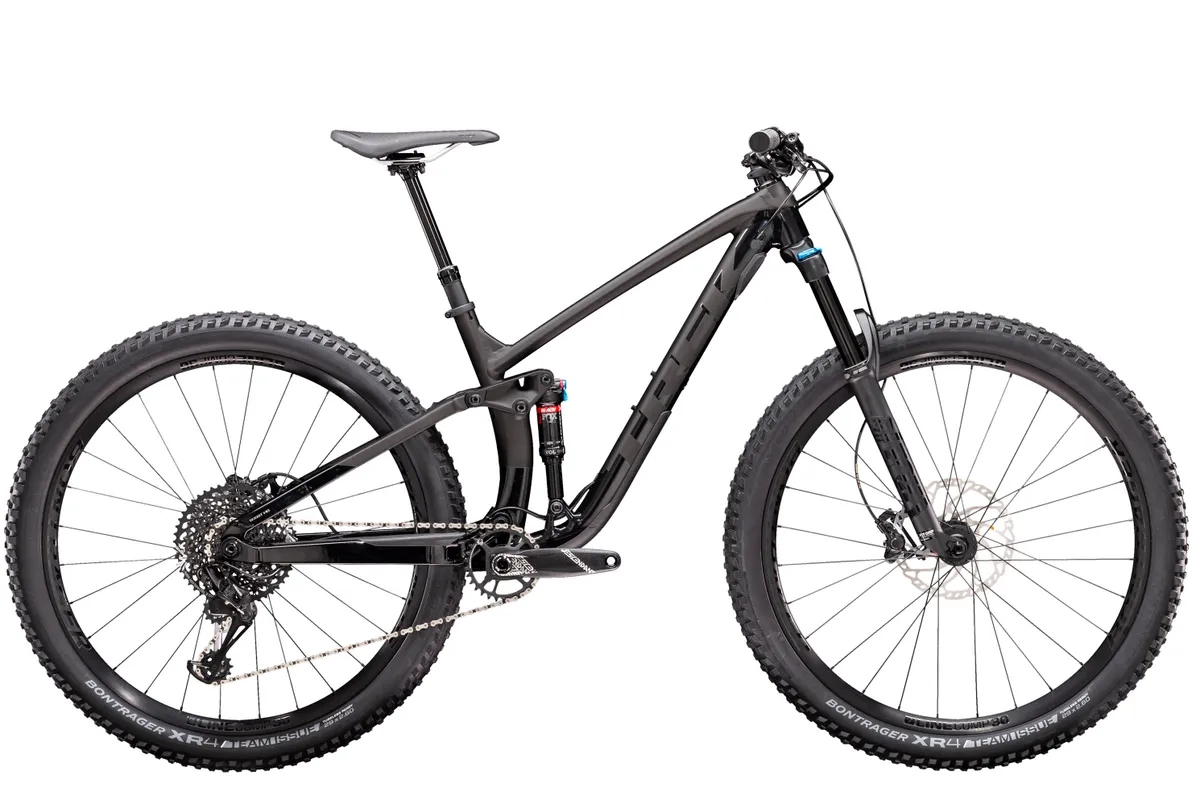
- Shock : Fox Performance Float EVOL, RE:aktiv 3-position damper
- Fork : Fox Rhythm 34, Float EVOL air spring, GRIP damper, Boost 110, 140mm travel
- Shifter : SRAM GX Eagle, 12-speed
- Rear derailleur : SRAM GX Eagle, 12-speed
- Cassette : SRAM XG-1275 Eagle, 10-50, 12-speed
- Cranks : Truvativ Descendant 6k Eagle, DUB, 30-tooth chainring
- Seatpost : Bontrager Line Dropper, 150mm travel
- Bar, stem and grips : Bontrager Line alloy, Bontrager Line, Bontrager XR Trail Elite
- Brakes : Shimano Deore M6000 hydraulic disc
- Price : £2,800 / $3,499.99 / AU$5,400 / from €3,199
Trek Fuel EX 8 XT

- Shifter : Shimano XT M8100, 12-speed
- Rear derailleur : Shimano XT M8100, 12-speed
- Cassette : Shimano XT M8100, 10-51, 12-speed
- Cranks : Shimano XT M8100, 32-tooth chainring
Trek Fuel EX 9.7

- Frame : OCLV Mountain Carbon main frame and stays, internal storage, tapered head tube, Knock Block, Control Freak internal cable routing, ISCG05, Mino Link, ABP, Boost 148, 130mm travel
- Cranks : Truvativ Descendant 6k Eagle, DUB, 32-tooth chainring
- Brakes : Shimano MT420 4-piston hydraulic disc
- Price : £3,400 / $4,099.99 / AU$5,000 / from €3,899
Trek Fuel EX 9.8

- Shock : Fox Performance Float EVOL, RE:aktiv with Thru Shaft 3-position damper
- Fork : Fox Performance 36, Float EVOL air spring, GRIP damper, Boost 110, 140mm travel
- Wheels : Bontrager Line Carbon 30, tubeless ready, Boost 110 front, Boost 148 rear
- Cassette : SRAM XG-1275 Eagle, 11-50, 12-speed
- Cranks : Truvativ Descendant 7k Eagle, DUB, 32-tooth chainring
- Seatpost : Bontrager Line Elite Dropper, 170mm travel
- Bar, stem and grips : Bontrager Line Pro, OCLV Carbon, Bontrager Line Pro, Bontrager XR Trail Elite
- Brakes : Shimano SLX M7120 4-piston hydraulic disc
- Price : £4,750 / $6,999.99 / AU$7,000 / €5,499
Trek Fuel EX 9.8 XT
- Tyres : Bontrager XR4 Team Issue, tubeless ready, Inner Strength sidewalls, aramid bead, 120TPI 29 x 2.60in
- Price : £5,300 / $N/A / AU$N/A / €N/A
Trek Fuel EX 9.9
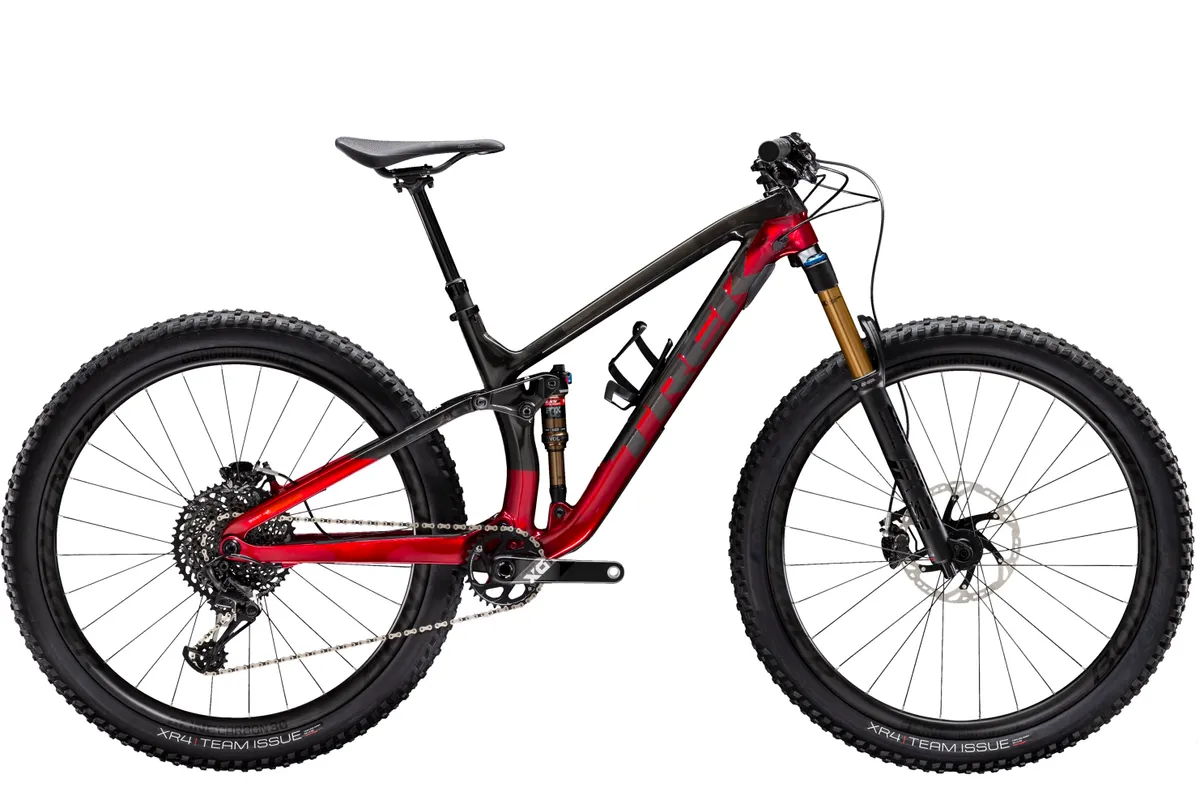
- Shock : Fox Factory Float EVOL, RE:aktiv with Thru Shaft 3-position damper, Kashima coating
- Fork : Fox Performance 36, Float EVOL air spring, GRIP2 damper, Kashima coating, Boost 110, 140mm travel
- Shifter : SRAM X01 Eagle, 12-speed
- Rear derailleur : SRAM X01 Eagle, 12-speed
- Cranks : SRAM X01 Eagle Carbon, DUB, 32-tooth chainring
- Brakes : Shimano XT M8120 4-piston hydraulic disc
- Price : £6,500 / $7,499.99 / AU$9,500 / €7,499
Trek Fuel EX 9.9 X01 AXS

- Shifter : SRAM Eagle AXS, 12-speed
- Rear derailleur : SRAM X01 Eagle AXS, 12-speed
- Cassette : SRAM XG-1295 Eagle, 11-50, 12-speed
- Cranks : SRAM X01 Eagle AXS Carbon, DUB, 32-tooth chainring
- Seatpost : RockShox Reverb AXS, 170mm travel
- Price : £8,000 / $N/A / AU$N/A / €9,099
Trek Fuel EX 9.9 XTR
- Shifter : Shimano XTR M9100, 12-speed
- Rear derailleur : Shimano XTR M9100, 12-speed
- Cassette : Shimano XTR M9100, 10-51, 12-speed
- Cranks : e*thirteen TRS Race, carbon, 32-tooth chainring
- Brakes : Shimano XTR M9120 4-piston hydraulic disc
- Price : £7,050 / $N/A / AU$N/A / €N/A
Share this article

Senior technical editor

- Terms & Conditions
- Subscribe to our magazines
- Manage preferences
Trek Top Fuel 8 review: a progressive rather than podiuming XC machine
Trek’s top fuel delivers superlative short-travel suspension performance but it’s definitely a trail bike not an xc bike.

BikePerfect Verdict
Awesome suspension, agile swagger, grippy kit and practical frame updates build a brilliant rally bike, but high weight buries any XC aspirations
Infectiously agile and playful vibe
Superlative suspension feel
Seriously tight tracking frame
Trail tough kit
Internal storage
Too heavy for XC racing
Simple fork damper
Tight internal storage access
Yawning gap between this and the Supercaliber
Why trust BikePerfect Our cycling experts have decades of testing experience. We'll always share our unbiased opinions on bikes and gear. Find out more about how we test.
Top Fuel used to be Trek’s out-and-out best full-suspension mountain bike for racing, but with the soft-tail Supercaliber under its sponsored riders now, the Top Fuel has developed a burly rather than race character.
The latest frame, suspension and spec changes to the 8 make the most of its short-travel agility and gripped tenacity to create a proper rally racer. Excess weight shows on climbs and acceleration though.
Design and geometry
The alloy Top Fuel frame not only has the same geometry, shock and suspension layout as its carbon counterpart but Trek’s engineers have also worked super-hard to give it the same extensive, updated feature lineup. That includes the lever-locked trapdoor into the down tube for internal storage, threaded bottom bracket shell with chain guide tabs. The Knock Block 2.0 inset now allows 72-degrees of steering lock (not 58-degrees as before) or you can fit a blank insert for full rotation if the bars aren’t slammed.
In fact, it’s one of those bikes where we continually found ourselves riding how we always want to ride, not how we actually ride. That inevitably builds into an addictive upward spiral of confidence and insolent speed that often ended with us snapping at the heels of more expensive longer travel bikes even on really rowdy trails. Picking a larger, longer frame will settle it even more at speed, but for flow trails, it was refreshing to really rip those big Bontrager side tire lugs round on a compact, close combat chassis. Just be careful you don’t get too carried away, as however good it feels, less travel inevitably means the tires are having to cope with more impact force and we soon put a couple of splits in the rear tire despite the ‘inner strength’ casing.
When that happens the narrow neck of the storage hatch can make getting your spare tube out awkward and the high cage position means you won’t get a large bottle in either. There’s space for a 2.5in tire in the rear swingarm which pivots co-axially around the rear axle according to Trek’s ‘Active Braking Pivot’ wisdom. While it limits choice, the switch to a 34.9mm seatpost size should mean stiffer, smoother dropper action, especially on larger frame sizes which get up to a 200mm shaft stock. The new trunnion style shock pivots more smoothly and is the right way up now compared to last year’s inverted shocks. That means the MinoLink geometry flip chip to change angles by 0.5-degrees is now at the base of the shock but it’s still easy to get too. Significantly all RockShox spec Trek bikes from the 8 upwards get the same ‘Ultimate RCT’ spec Deluxe rear shock.
The alloy frame is a kilo heavier (3.74kg vs 2.7kg) than the carbon option according to Trek’s weights. This saves you $1,400/£1,500 if you buy the frame separately, although it still retails for $2,319.99/£2,350. Those numbers prove it’s neither affordable or light for a bike that you’ll find listed in the XC section of Trek's website, not the trail pages. In fact, the 130mm Fuel EX Al frame is the same weight although that doesn't have internal storage.
A 66/66.4-degree head tube definitely suggests progressive riding rather than traditional podium hunting vibes too. The 465/469mm reach on our M/L size is more trad than rad though so riders after a stretch should make use of the short 450mm seat tube and opt for the L with a 480/484 reach. All bikes get the same 76/76.4-degree seat tube angle and 434/435mm chainstay length though so while having six (S-XXL) sizes is great, the balance is definitely centered around the M - M/L - L models.
Components and build
The Top Fuel 8 is the most expensive alloy bike, above the 7 at $3,529.99/£3,200 and the 5 at $2,629.99/£2,700 (we don’t know what 6 did to offend them but its missing from the line-up), but below the carbon-framed 9.7 at $4,229.99/£4,700.
The highlights of the package are the lightweight SID fork (albeit with the simplest Rush Damper) and Shimano XT rear mech and shifters. The Bontrager XR4 tires are some of our favorite welterweight all-rounders too. The SLX crank is a great piece with a 30T ring for easy climbing, but muscle Mary’s will find a 36T fits the frame too. You get a 150mm Trans-X dropper with a Bontrager Arvada saddle on top and 35mm diameter Bontrager Elite 45mm stem and 780mm wide bar.
Deore four-pot brakes just about do the job adequately via 180/160mm rotors but together with the wide rim tubeless Bontrager Line Comp 30 wheels they’re an obvious area where extra weight creeps in and adds up to nearly 14.5kg without pedals.
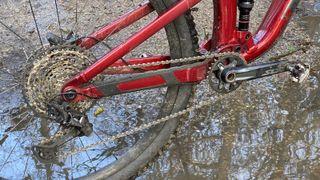
Performance
Add that weight to chunky treaded, relatively grippy tires and however Trek categorizes the Top Fuel, the 8 clearly isn’t the best choice for charging climbs and ripping round simple XC laps. Now we’ve got rid of the people who’ll likely love the 12.2kg Trek Supercaliber for the same money, we can start talking about what the Top Fuel does do really well – and that’s riding properly rowdy.
While bikes like the Evil Following , Santa Cruz Tallboy , and Norco Optic have already established that short-travel bikes can feel awesome, the Top Fuel definitely goes into the small travel, BIG capability hall of fame. Like most of its peers, it doesn’t squander initial shock movement and can feel slightly sharp in the car park unless you drop tire pressures low.
Once moving though it’s both amazingly fluid and connected over ruts and roots whether climbing janky tech or sucking onto stutter bump/root ripple turns or off-camber high lines. The wheel path and rear pivot position mean there’s minimal pull back through the pedals as it hoovers up chunder so you can stay on the gas without getting jacked or stalled out. While we’re always suspicious of acronyms and a 160mm rotor doesn’t generate much torque anyway, the braking performance of the ABP rear end is impressively grippy compared to the same hardware on other bikes.

The RCT damper also has plus and minus low-speed compression settings to fine-tune support sensitivity depending on personal/terrain preferences. Even in the plus setting the mid-stroke mobility does mean you’ll want to flick into the much firmer ‘pedal’ mode if you’re stood up slow cadence churning on a climb or don’t want distracting bounce on long smooth climbs. The SID fork gets a similar firming option via the fork top lever though we rarely touched it unless we were really hanging on a road climb.
While the superlative suspension performance is definitely the heart of the Top Fuel’s ‘have a go hero’ character, the rest of the bike definitely exploits it rather than squandering it. The alloy frame might be heavy but it’s seriously stout when it comes to squaring up to the trail when things get punchy.
While the simpler Rush damper starts to get seasick and inconsistent well before the back end, the 35mm stanchions do a great job of staying on track. Shorter travel means less dive too and together with well-balanced cockpit dimensions and steering angle gives a really predictable and tenacious target lock.
Despite the hefty weight and relatively slow rear hub engagement the fact you can keep the power down or brake really late meant the Top Fuel always felt hyped to be hitting trails and tweaking lines as fast as possible. The shorter M/L size made it a proper joyride on tighter, twistier trails but you can still drive it really hard, heels down, feet level through turns and it loves to pump downslopes.

Trek’s Top Fuel 8 is a brilliant example of just how good short-travel suspension can feel, and less stroke always means a more responsive, visceral ride than a leggier bike. The geometry and proper trail tires really let you exploit the hooligan that’s hiding in the frame along with your pump, tool and spare tube too.
As much as we’ve loved ripping around the trails on it, there’s no doubt it’s heavier and harder to accelerate/elevate than we’d like for its supposed XC/downcountry range placement though. If you’re about the overall vibe, not outright velocity, that doesn’t matter though.
Test conditions
- Temperature: -2 to 8 degrees
- Surface: Mixed blue-black trail center, moorland tracks, off-piste wooded tech and DH
Tech Specs: Trek Top Fuel 8
- Price: $3,829.99 / £3,850
- Model: Trek Top Fuel 8
- Discipline: XC/downcountry/trail
- Head angle: 66/66.4-degrees
- Frame material: Alpha Platinum Aluminium
- Weight: 14.46kg
- Wheel size: 29 x 2.4in
- Suspension: RockShox SID 120mm travel, 44mm offset/RockShox Deluxe Ultimate RCT 120mm travel
- Drivetrain: Shimano XT M8100 mech and shifter. Shimano SLX M7100, 10-51 cassette, chain
- Cranks: Shimano XT 30T chainset
- Brakes: Shimano Deore M6000 brakes with 180/160mm rotors
- Cockpit: Bontrager Line 780mm bar and 45mm stem
- Wheelset: Bontrager Line Comp 30 wheels
- Tires: Bontrager XR4 Team Issue 29 x 2.4in tires
- Seatpost: TranzX 150mm dropper post
- Saddle: Bontrager Arvada, steel rail saddle
Guy has been working on Bike Perfect since launch in 2019. He started writing and testing for bike mags in 1996. Since then he’s written several million words about several thousand test bikes and a ridiculous amount of riding gear. To make sure he rarely sleeps and to fund his custom tandem habit, he’s also penned a handful of bike-related books and talks to a GoPro for YouTube, too.
Current rides: Cervelo ZFS-5, Specialized Chisel, custom Nicolai enduro tandem, Landescape/Swallow custom gravel tandem
Height: 180cm
Weight: 69kg
Endura Women's SingleTrack Leggings review – versatile, compressive and flattering tights
Leatt MTB Enduro 3.0 Helmet review – high-performance, 3-in-1 convertible
Ergon GDH Team grip review – ergonomic gravity-specific grips
Most Popular

City in Moscow Oblast, Russia / From Wikipedia, the free encyclopedia
Dear wikiwand ai, let's keep it short by simply answering these key questions:.
Can you list the top facts and stats about Lyubertsy?
Summarize this article for a 10 year old
- Fuel EXe 8 XT
We'll take care of you. Period.
It's our mission to provide you with world-class hospitality every time you visit us online or in-store. We're always here to help you. It's the Trek way.
Free shipping and professional assembly
All bikes ordered online ship for free to your local Trek shop for professional assembly. Participating retailers will even deliver your new ride to your doorstep!
30 Day Unconditional Guarantee
If for any reason you aren't 100% happy with your trekbikes.com purchase, you can return it in like new condition within 30 days - no questions asked.
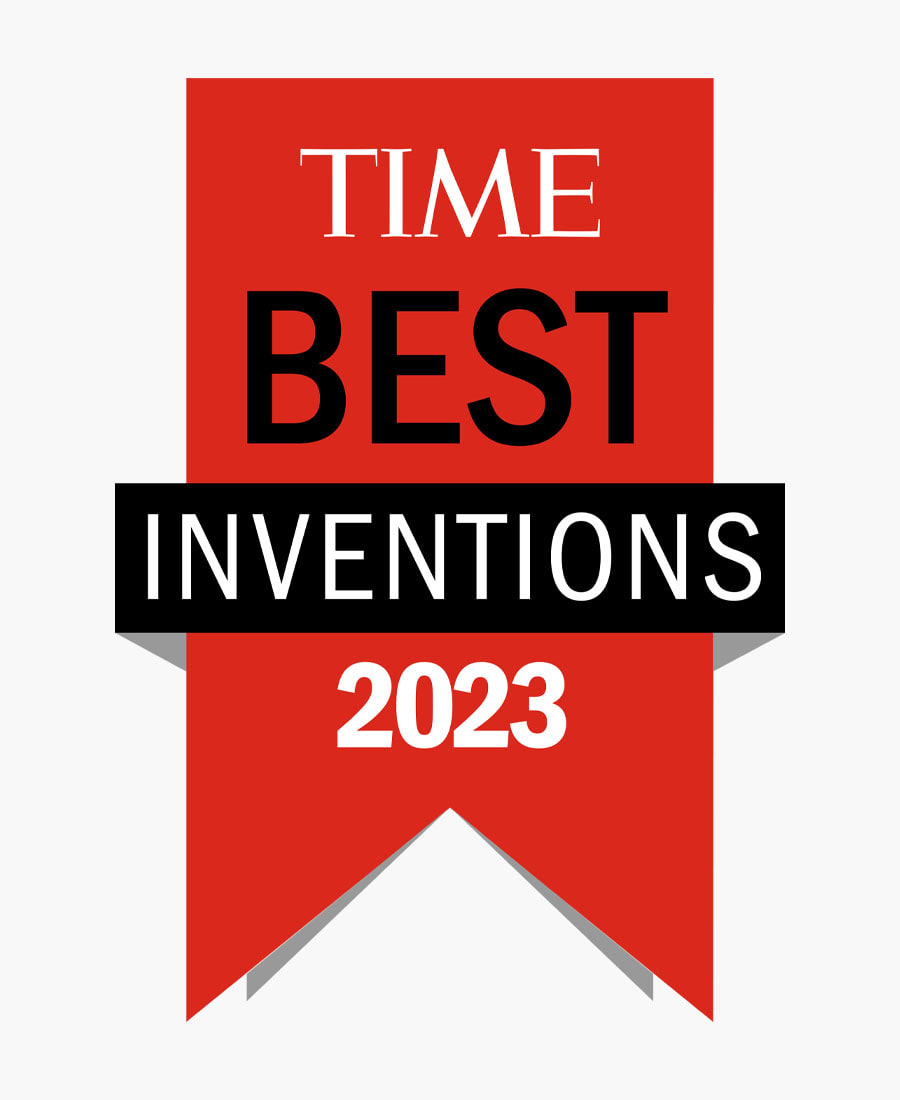
TIME Best Inventions of 2023
"Fuel EXe's natural-feeling assist and stealthy good looks earned it a coveted spot on TIME's Best Inventions of 2023 list." From TIME. © 2023 TIME USA LLC All rights reserved. Used under license.

TQ HPR-50 is Pinkbike's Innovation of the Year
"That tiny harmonic pin ring drive unit is the golden goose of e-bike motors." Find out what Pinkbike had to say about the revolutionary motor at the heart of Fuel EXe.
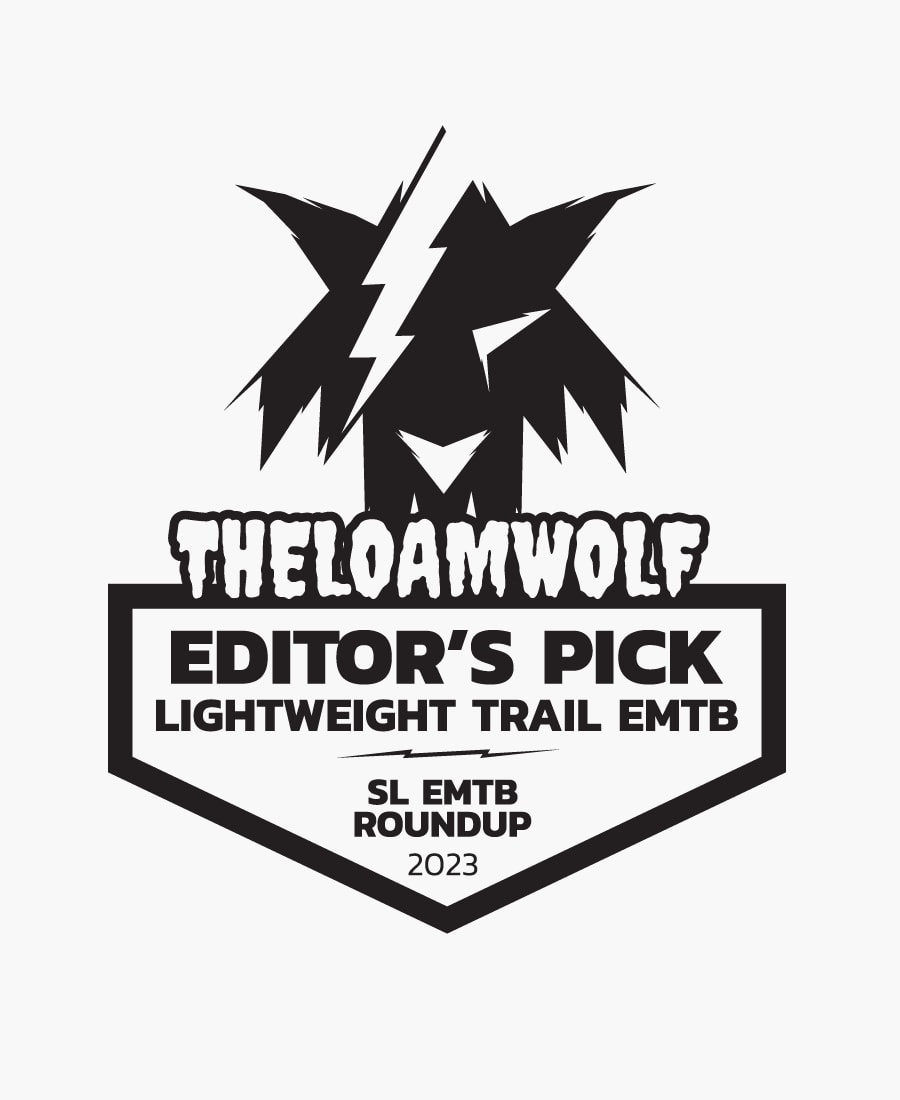
Best All-Around
"Overall, the Trek Fuel EXe is a bike that ranked consistently well across the board when it came to performance on the trail. It does everything pretty darn well and would be a great jack of all trades lightweight eBike for those looking to have a mid-power eMTB for trail shredding fun."
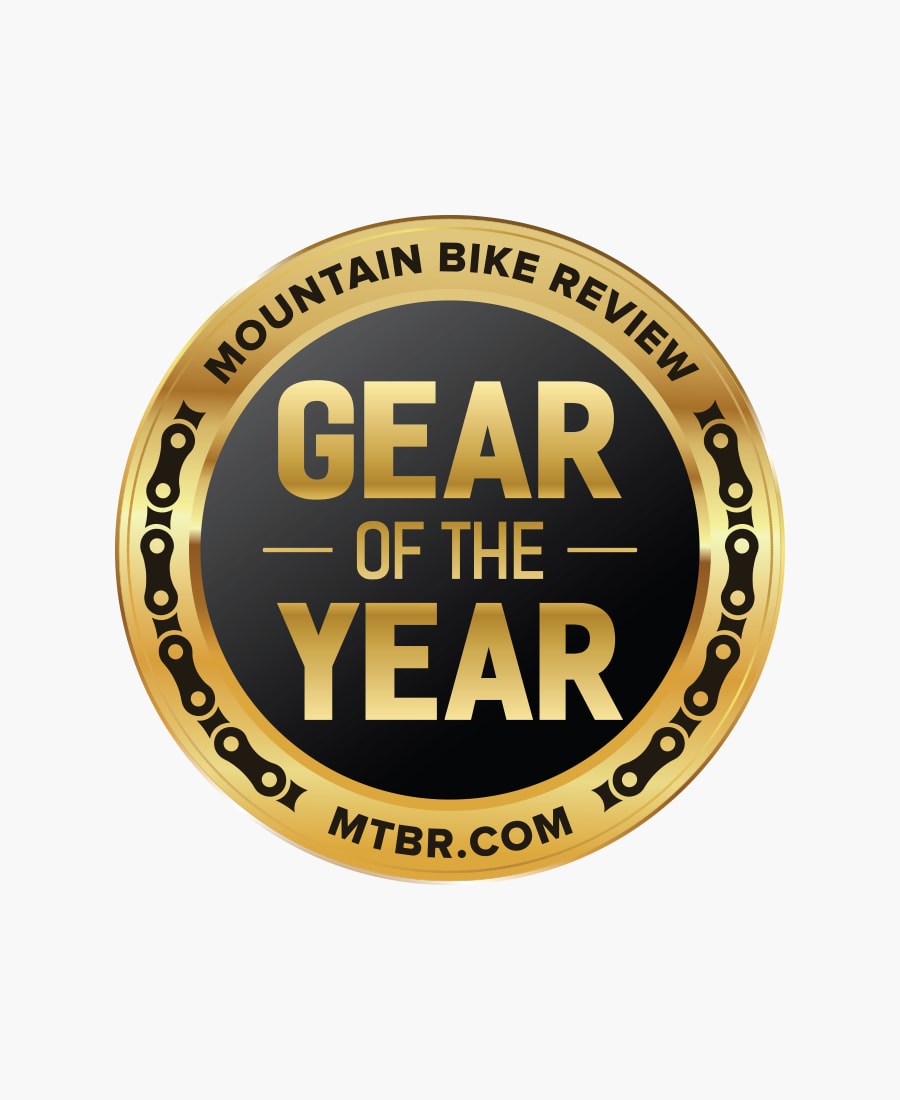
2022 Gear of the Year
"This is the first time an e-bike has made my Gear of the Year list [...] in addition to being silent, the HPR50 motor feels frictionless while pedaling. The assistance comes on with a subtlety that makes it feel like you are a younger, fitter version of yourself with a tailwind at your back."
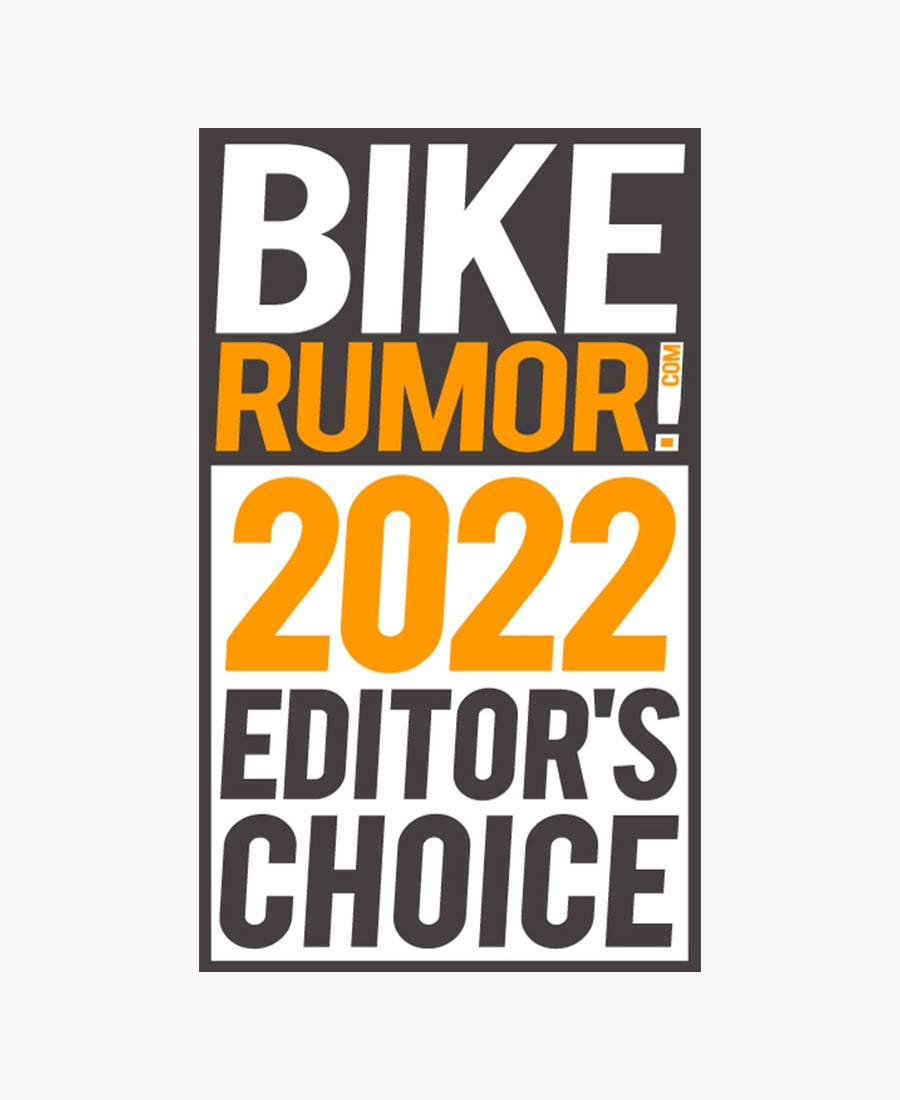
Editor's Choice
"The low-key, silent assist is just enough, keeping it riding like a real mountain bike but making the climbs less sucky. Don’t get me wrong, I love a good high-power eMTB, but I loved this bike, too. Trek’s Fuel EX’s handling is dialed, and this is merely an enhanced version of that. I tested the top model, but, fortunately, there are also mid-priced models that eschew some of the AirWiz(ardy) without giving up any of what makes this bike rad."

"Nothing comes close"
"Simply put, nothing comes close to the Fuel EXe when you paint the picture of the mountain bike experience as a whole."

"Probably going to be the most significant bike launched this decade"
"The Trek Fuel EXe is the bike (e or otherwise) that plenty of people have been waiting to see… Removes the final few issues that the e-curious crowd had."

"One of the best mountain bikes - powered or unpowered - I’ve recently ridden."
"The Fuel EXe is such a harmonious package that I got comfortable with it very quickly, and it wasn’t much longer before I was in love with this bike...I legitimately forgot that I was on an e-bike at times…it’s the most natural feeling motor I’ve yet ridden."

"We have to call it as we see it and the Trek Fuel EXe just elevated the eMTB game."
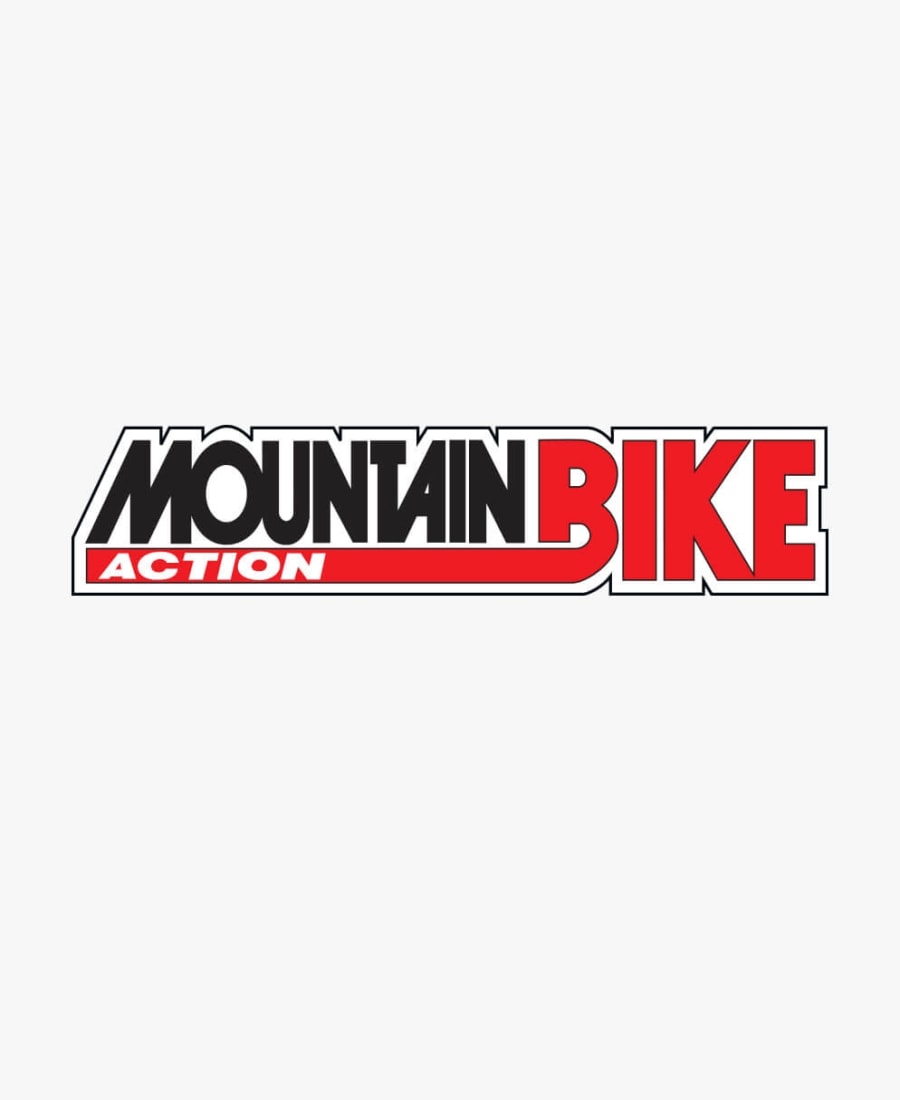
"The first impression was a unanimous 'Wow.' This is one of the few times that a bike exceeded expectations."

"Nothing less than a great leap forward for eMTBs"
"There are times when I am left amazed by something new and shiny, and that is the case with the Trek Fuel Exe...I might even go as far as to call it an engineering marvel."
More options

IMAGES
VIDEO
COMMENTS
Fuel EX 8 GX AXS T-Type Gen 6. 2 Reviews / Write a Review. $3,999.99 $4,999.99. Model 5296803. Retailer prices may vary depending on location and delivery method. The final price will be shown in your cart. Fuel EX 8 GX AXS is an evolved trail bike, dialed for riders who chase down rowdy descents, and want a bike that's happy to pedal back to ...
The geometry of the Fuel EX 8 is a dramatic improvement over the previous version, and Trek has addressed most of the current trail bike trends. A longer reach and wheelbase, slacker head tube, steeper seat tube, and flip-chip adjustable geometry are a proven recipe for enhanced downhill performance and capability.
The Frame. The sixth-generation Fuel EX includes loads of updates, starting with the wild amount of adjustability on offer. The prior-generation bike had a flip chip to toggle between two geometry settings, which the new bike retains, but it adds an optional offset headset that changes the headtube angle by +/- 1.0°, as well as a second flip chip that varies the amount of progression from the ...
Trek Fuel EX 8 review - still one of the best trail MTBs? ... You also get the 0.5-degree geometry change 'Mino Link' flip chip at the seat stay/rocker pivot. That changes head angle from 65.5- to 65-degrees and effective seat angle from 75.5- to 75-degrees on the Large I tested. Reach also shifts from 475 to 470mm and BB height drops ...
A flip chip is used to increase or decrease the amount of progression. ... I had a 2020 fuel ex 9.8, cracked around the shock mount points, warranty replaced with a 2021 9.9 frame, cracked at the ...
In keeping with the new Trek Fuel EX's theme of being adaptable and capable. In its neutral-low setting, the bike comes with a 64.5-degree head tube angle and the effective seat tube angle sits at 77.2-degrees. Chainstays shift with the frame size, and on a large come in at 440mm. Thanks to the Mino Link flip chip, you can adjust bottom ...
The Trek Fuel EX still has a Mino Link flip-chip, giving it a high/low setting, and the suspension has a flip-chip too, giving it a more progressive setting for coil shock riders or hard-charging jumpers. ... I've had the Trek Fuel EX 9.8 GX AXS, retailing for $7,700. It's a sweet build: carbon frame, ...
Fuel EX 8 is the ideal trail bike for riders who want a versatile full suspension ripper that makes soul-crushing climbs less painful, but can also huck rowdy trails. It hits the sweet spot of value and performance in our mountain bike lineup by combining high-end parts with a stout but light alloy frame, and 130mm rear/140mm front suspension ...
Fuel EX Gen 5. With 130mm rear and 140mm front travel, Fuel EX Gen 5 dishes out more nimble handling with less weight, along with better components for the price and internal storage on carbon models. • 130/140mm travel. • More nimble handling. • Lighter overall weight.
There are a number of different models available in the Trek Fuel EX 2023 lineup, though availability will vary depending on where you are in the world. In Australia, prices currently range from $4,999 AUD for the Fuel EX 7, and go up to $8,999 AUD for the Fuel EX 9.8 XT model. The cheapest option is actually the Fuel EX 5, though that model ...
The new Gen 6, Fuel EX 9.8 is the burliest, most versatile, and most capable Fuel yet; truly up for whatever you want to ride. Trek completely redesigned Fuel EX models for 2023, updating the geometry and suspension while adding a ton of adjustability. The big wheel trail bike still falls squarely in the mid-travel category with 140mm of rear ...
Specs, reviews & prices for the 2023 Trek Fuel EX 8 Gen 6. Compare forks, shocks, wheels and other components on current and past MTBs. View and share reviews, comments and questions on mountain bikes. ... - Geometry adjustable via Mino Link flip chip in rear rocker link pivot - Geometry adjustable via optional angle-adjust headset cups, ...
Of course you'll still find the Mino Link flip chip, which allows you to tweak the angles by 0.5° and the BB height by 8mm. ... The Trek Fuel EX 9.8 XT skips the Kashima treatment in favour of a Performance Series fork and shock. You're still getting the snazzy one-piece carbon cockpit and carbon wheels though. 2023 Trek Fuel EX 9.8 XT.
Flip chip allows customizable geometry for your trails; ... Small cosmetic paint chips on the top tube; Specifications Details. Original MSRP: $3,349.00: Year: 2018: Brand: Trek ... Trek Fuel EX 8 27.5 Plus Mountain Bike - 2018, 21.5" Or Schedule a Time to Chat. Sizing Guide
The trail-orientated Fuel EX gets a modern makeover to appeal to more riders with a broad range of build kits and new features. Read on for full specs, prices, photos and details.
Trail mountain bikes. Fuel EX. Fuel EX is your go-to full suspension bike for doing it all every day. From epic big mountain rides on the weekend to rowdy local trails after work, Fuel EX is there for all your ups and downs. Choose from the lighter 130/140mm Fuel EX Gen 5 with better parts for the price or the more robust 140/150mm Fuel EX Gen ...
Trek dual suspension mountain bikes come with the Mino Link, a plate which can be positioned to change the BB height and head angle. This can be adjusted dep...
That means the MinoLink geometry flip chip to change angles by 0.5-degrees is now at the base of the shock but it's still easy to get too. Significantly all RockShox spec Trek bikes from the 8 upwards get the same 'Ultimate RCT' spec Deluxe rear shock. ... the 130mm Fuel EX Al frame is the same weight although that doesn't have internal ...
Moscow Oblast (Russian: Московская область, romanized: Moskovskaya oblast, IPA: [mɐˈskofskəjə ˈobləsʲtʲ], informally known as Подмосковье, Podmoskovye, IPA: [pədmɐˈskovʲjə]) is a federal subject of Russia (an oblast).With a population of 8,524,665 (2021 Census) living in an area of 44,300 square kilometers (17,100 sq mi), it is one of the most densely ...
46631170051. Inside Shorigin's factory, beginning of the 20th century. Oktyabrsky ( Russian: Октя́брьский) is an urban locality (a work settlement) in Lyuberetsky District of Moscow Oblast, Russia, located 34 kilometers (21 mi) southeast of Moscow and 14 kilometers (8.7 mi) south of Lyubertsy. Population: 13,165 ( 2010 Census); [1 ...
Lyubertsy ( Russian: Люберцы, IPA: [ ˈlʲʉbʲɪrtsɨ]) is a city and the administrative center of Lyuberetsky District in Moscow Oblast, Russia. You can help expand this article with text translated from the corresponding article in Russian. (March 2024) Click for important translation instructions. Machine translation, like DeepL or ...
Fuel EXe 8 XT. $6,599.99. Model 5300093. Retailer prices may vary. Fuel EXe 8 is a trail-ready aluminum electric mountain bike that quietly assists you on the climbs so you've got all the power you need on descents. Like its carbon counterpart, it looks and handles like a traditional trail bike, but with the added support of a tiny-but-mighty ...
Main page; Contents; Current events; Random article; About Wikipedia; Contact us; Donate; Pages for logged out editors learn more